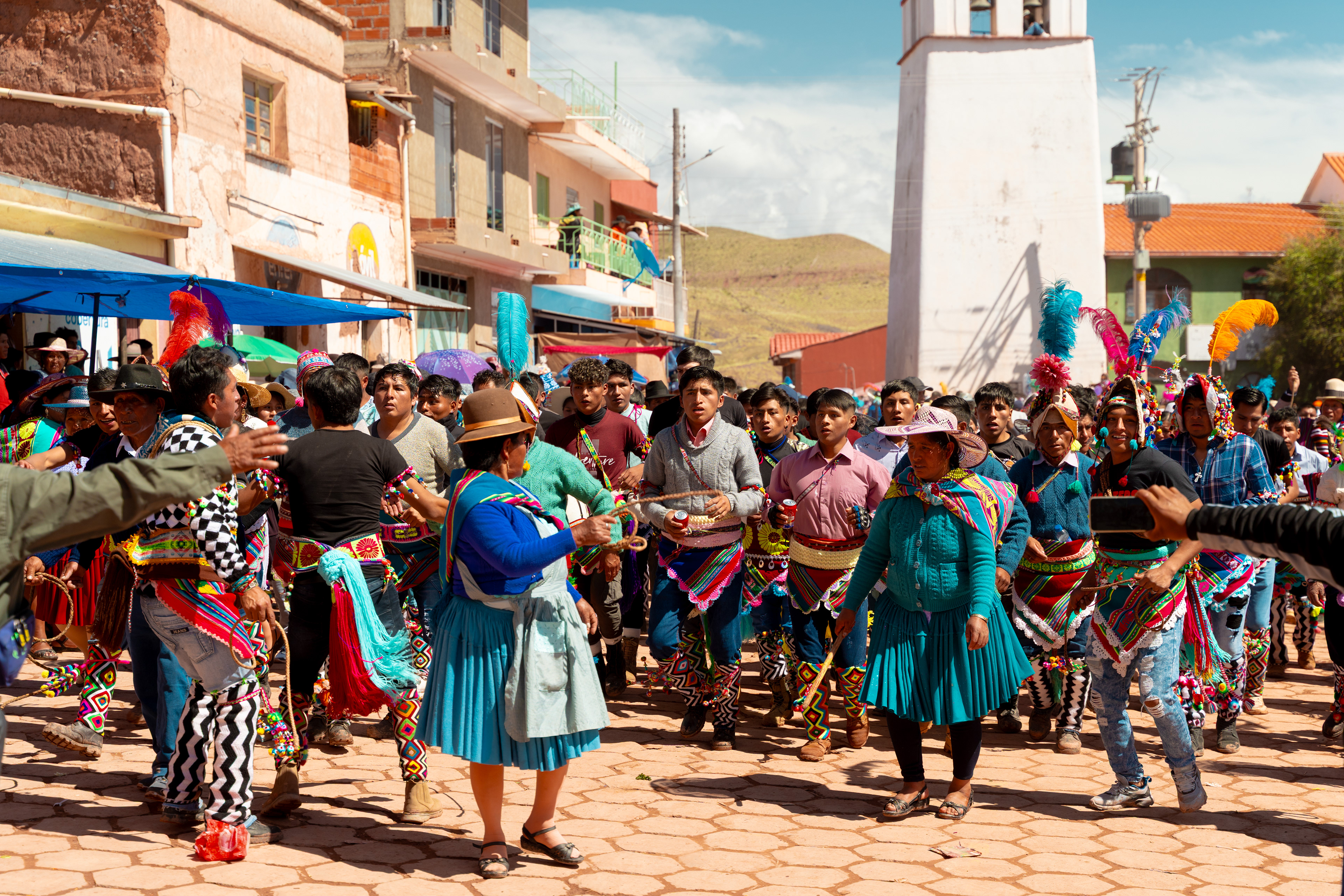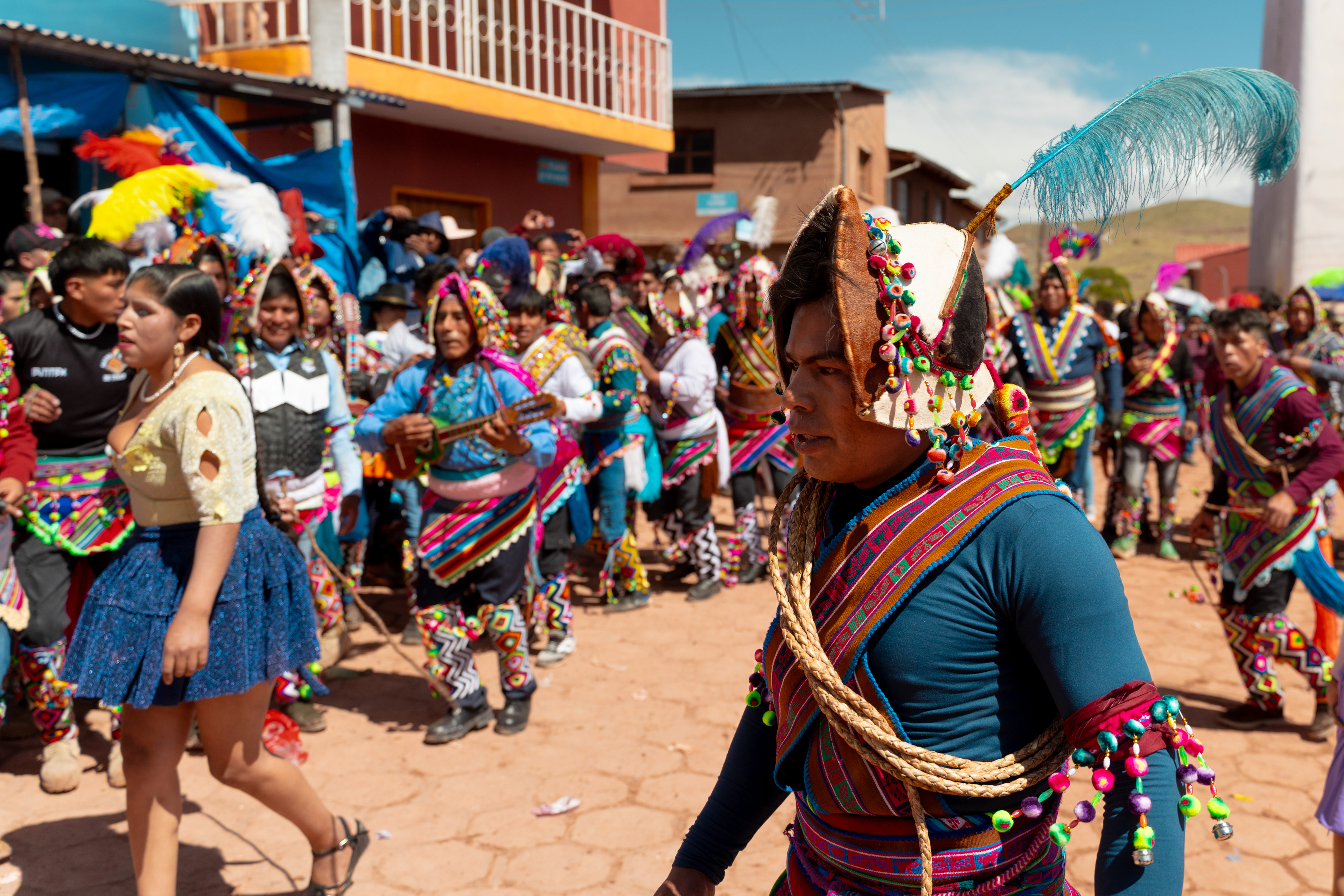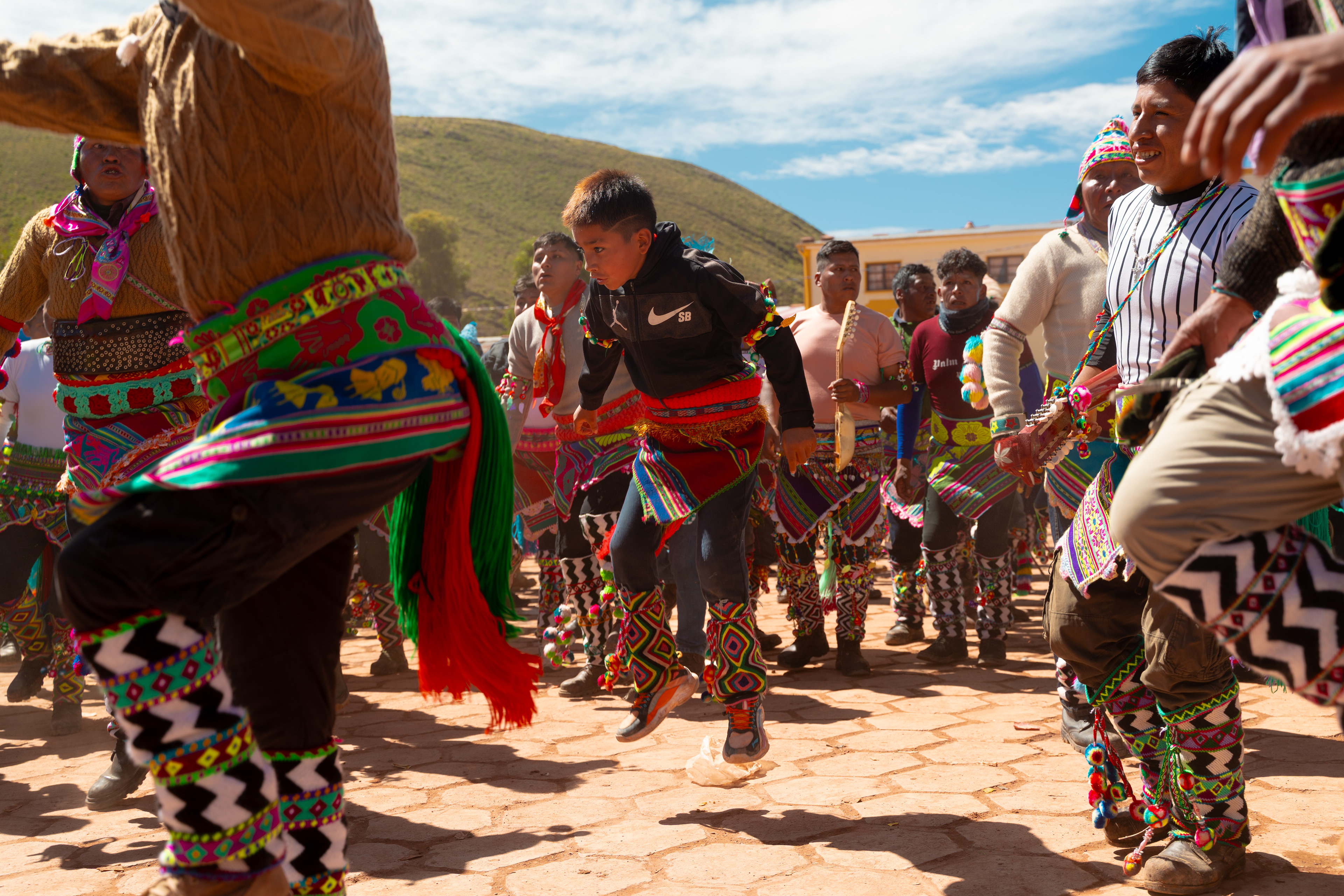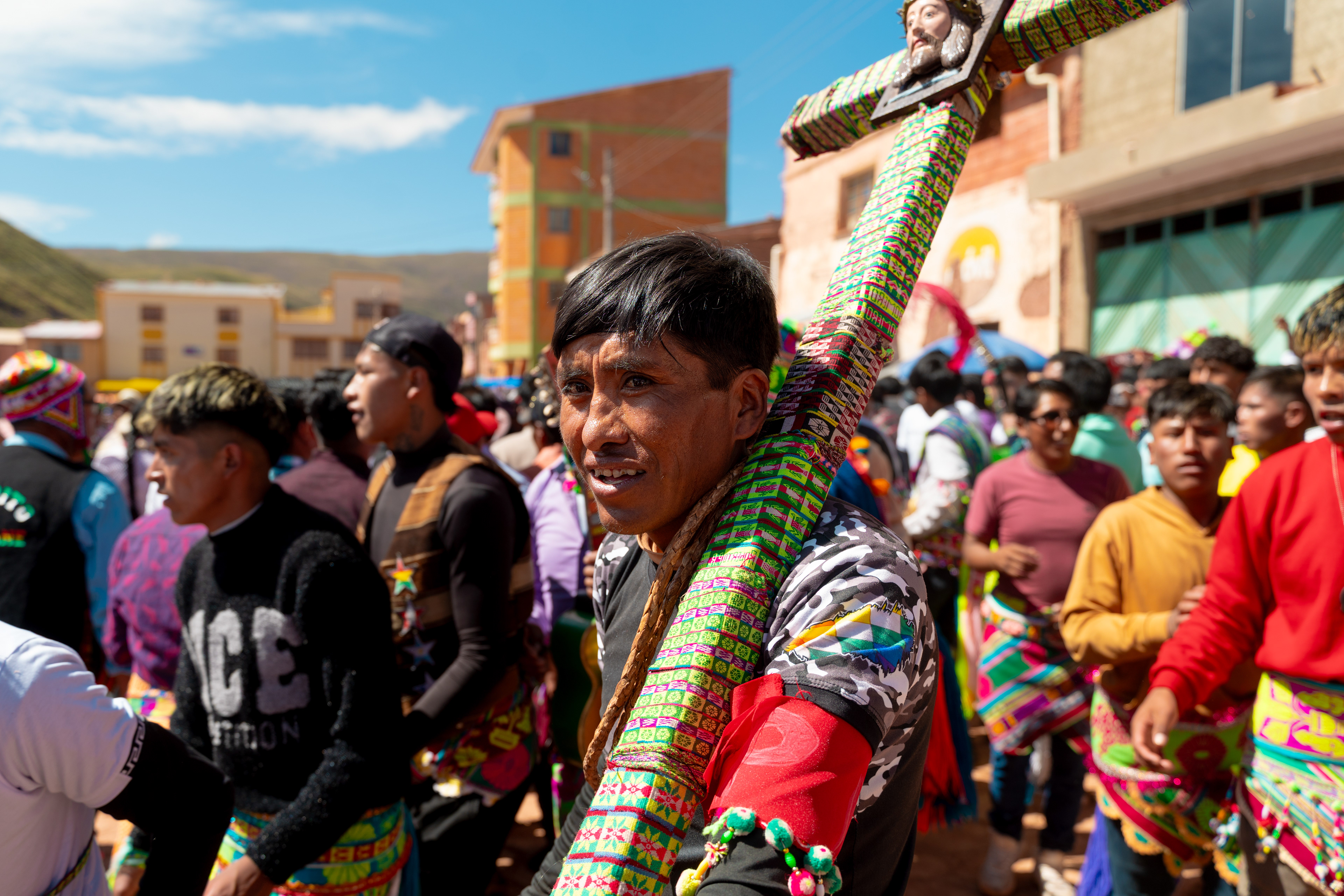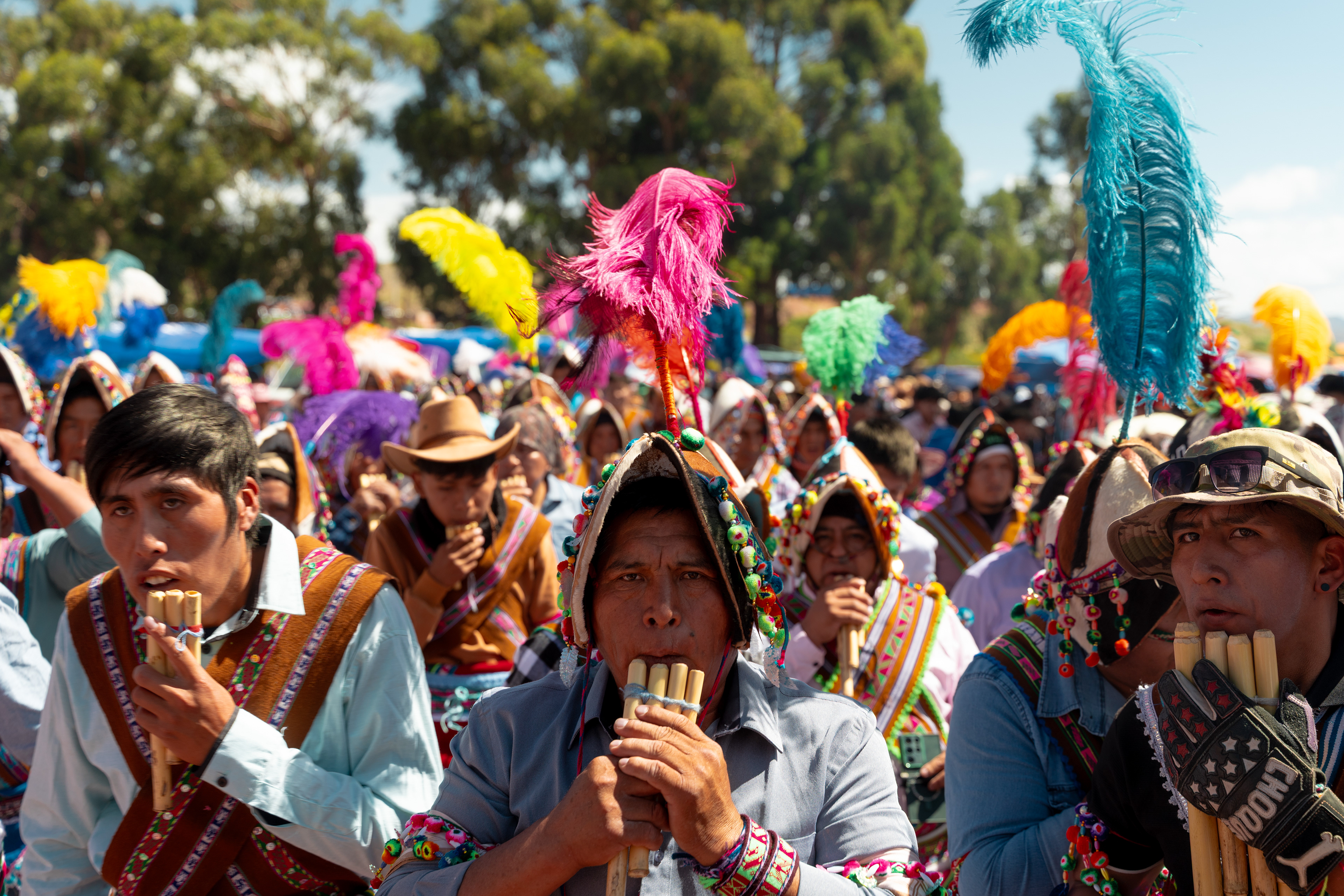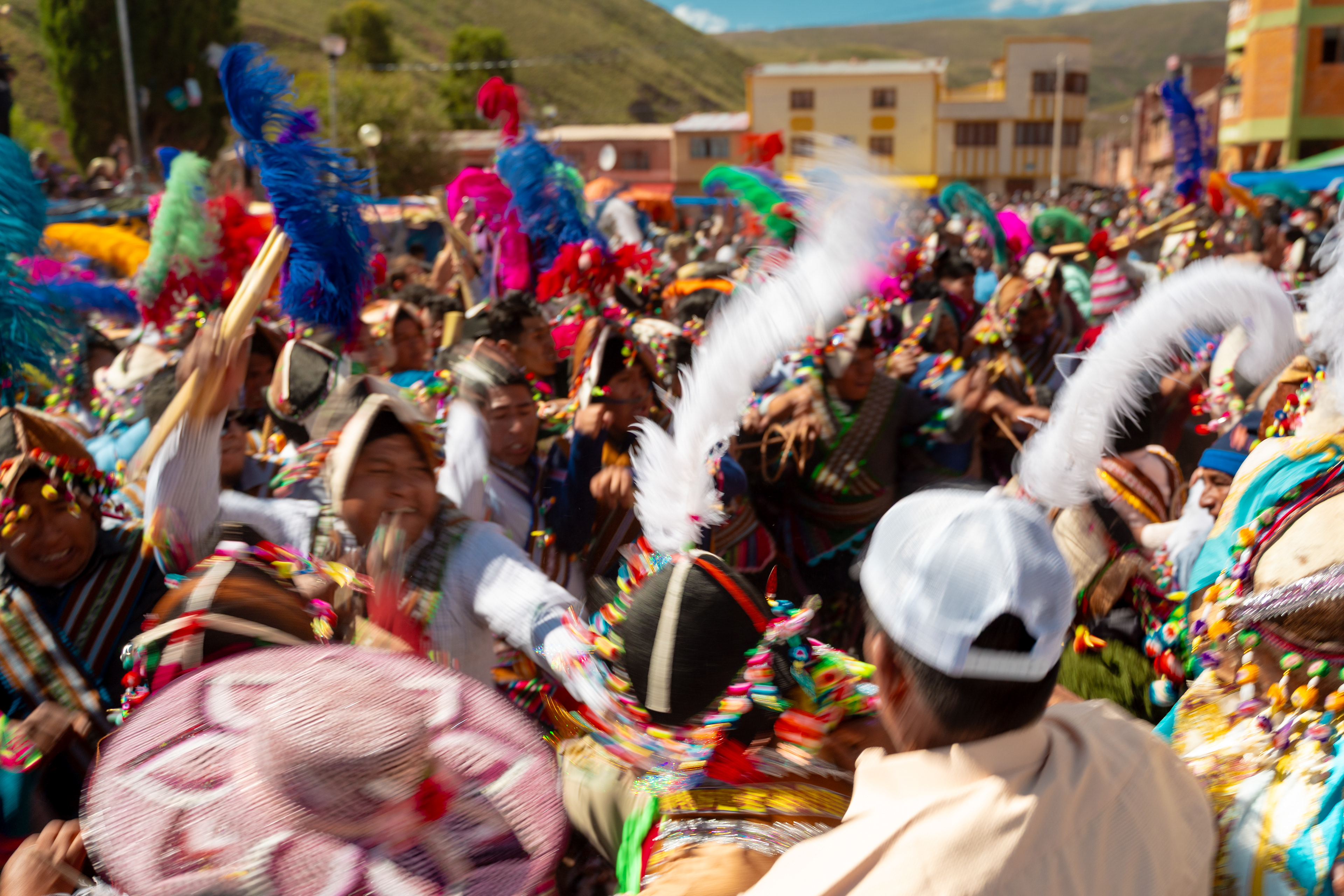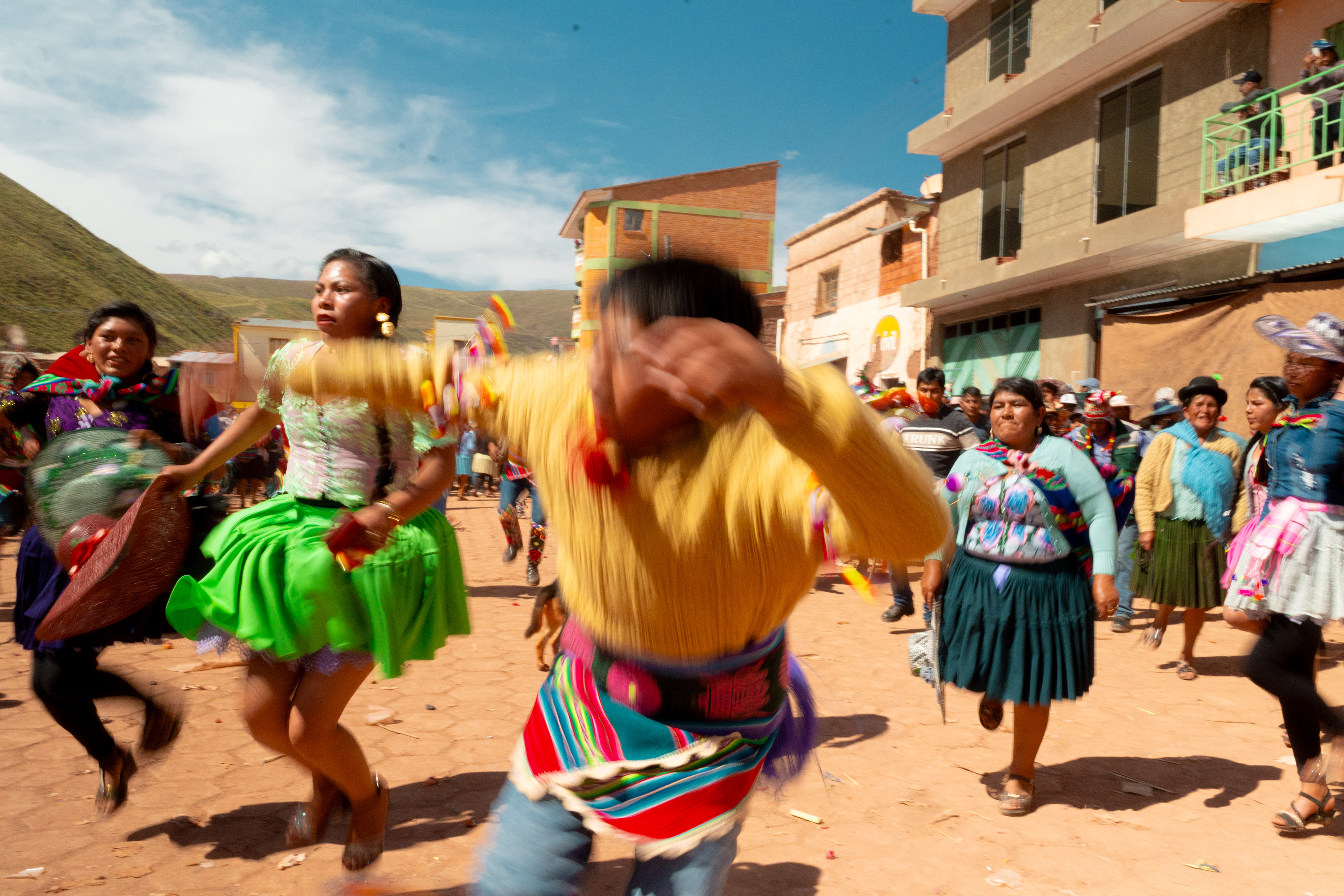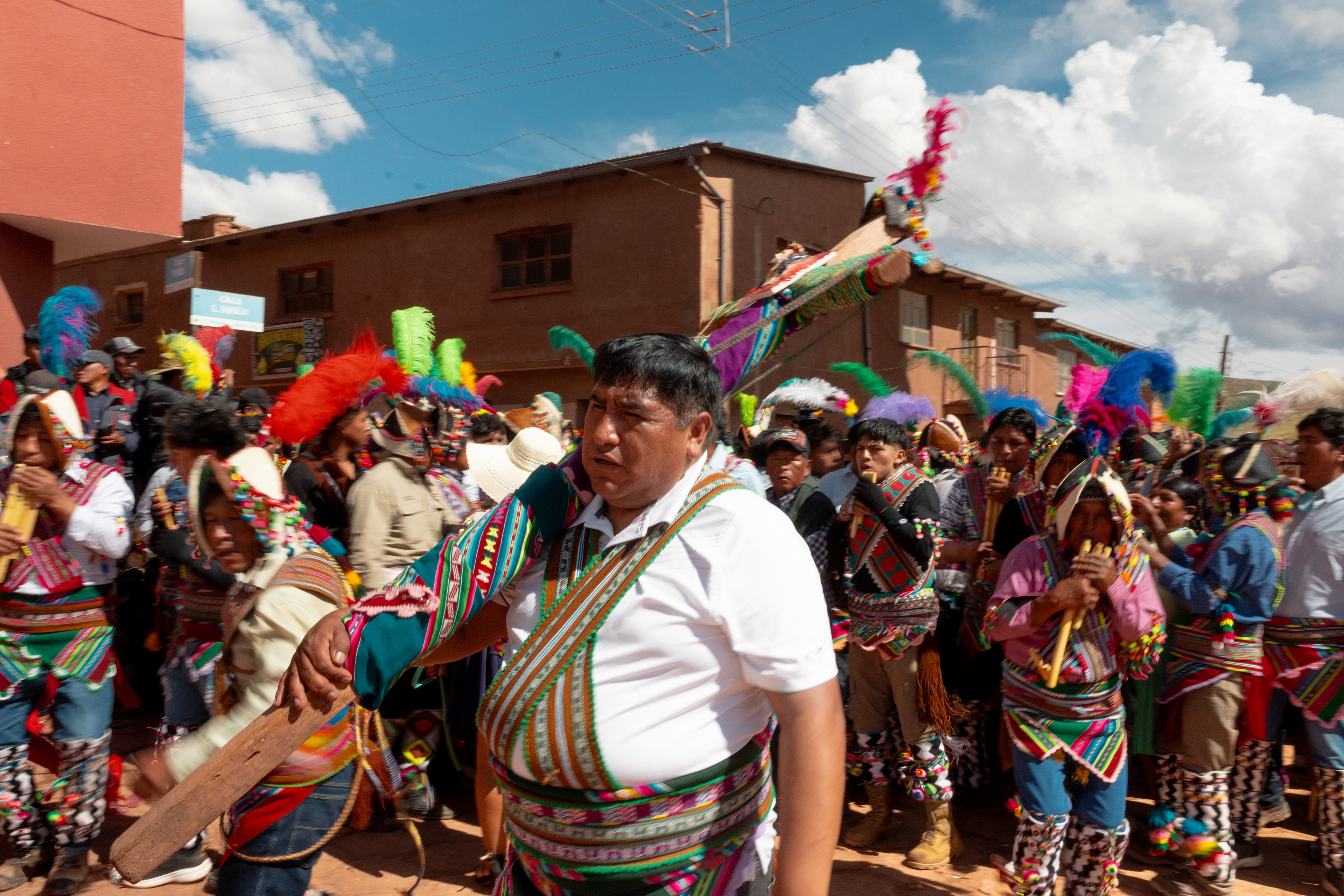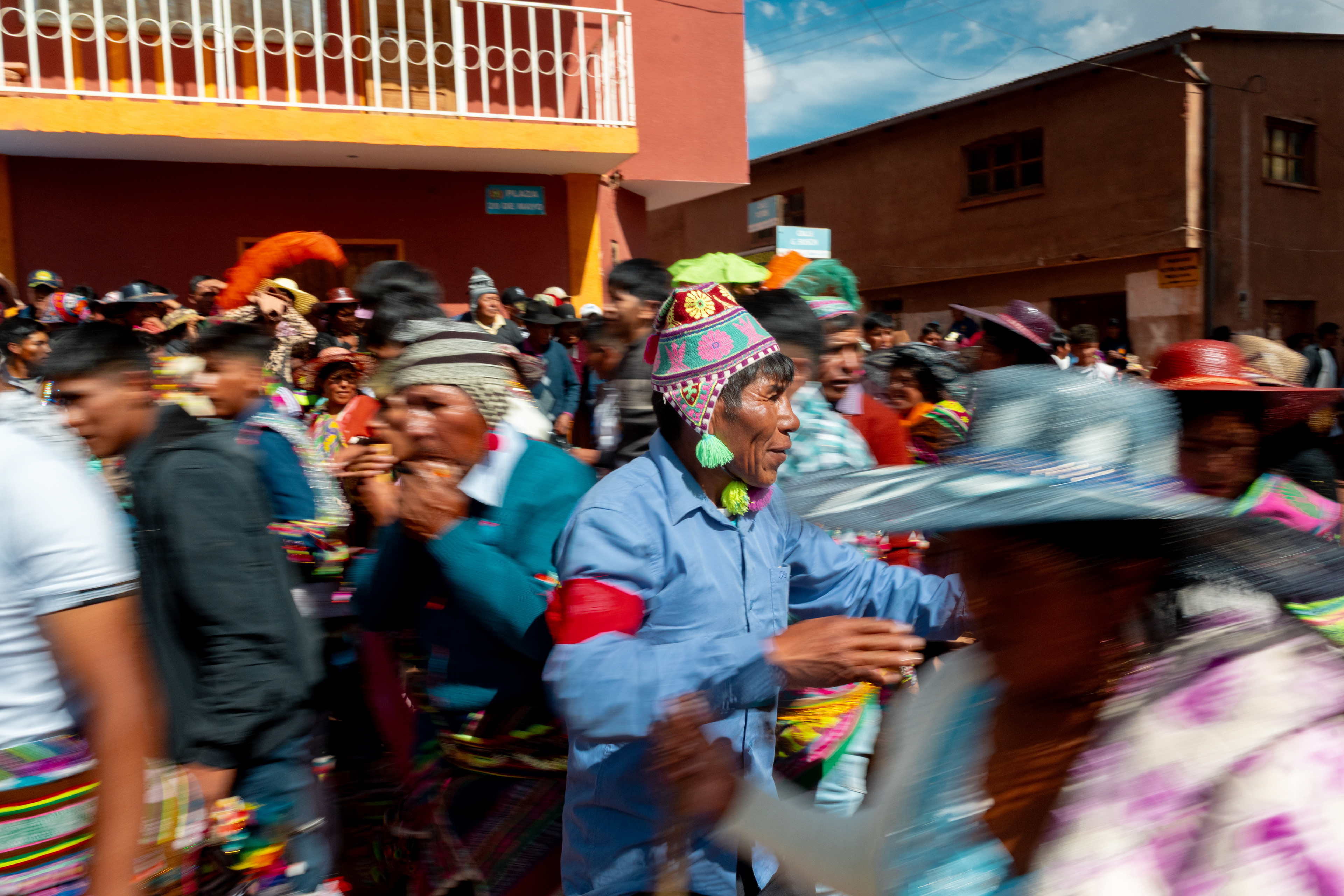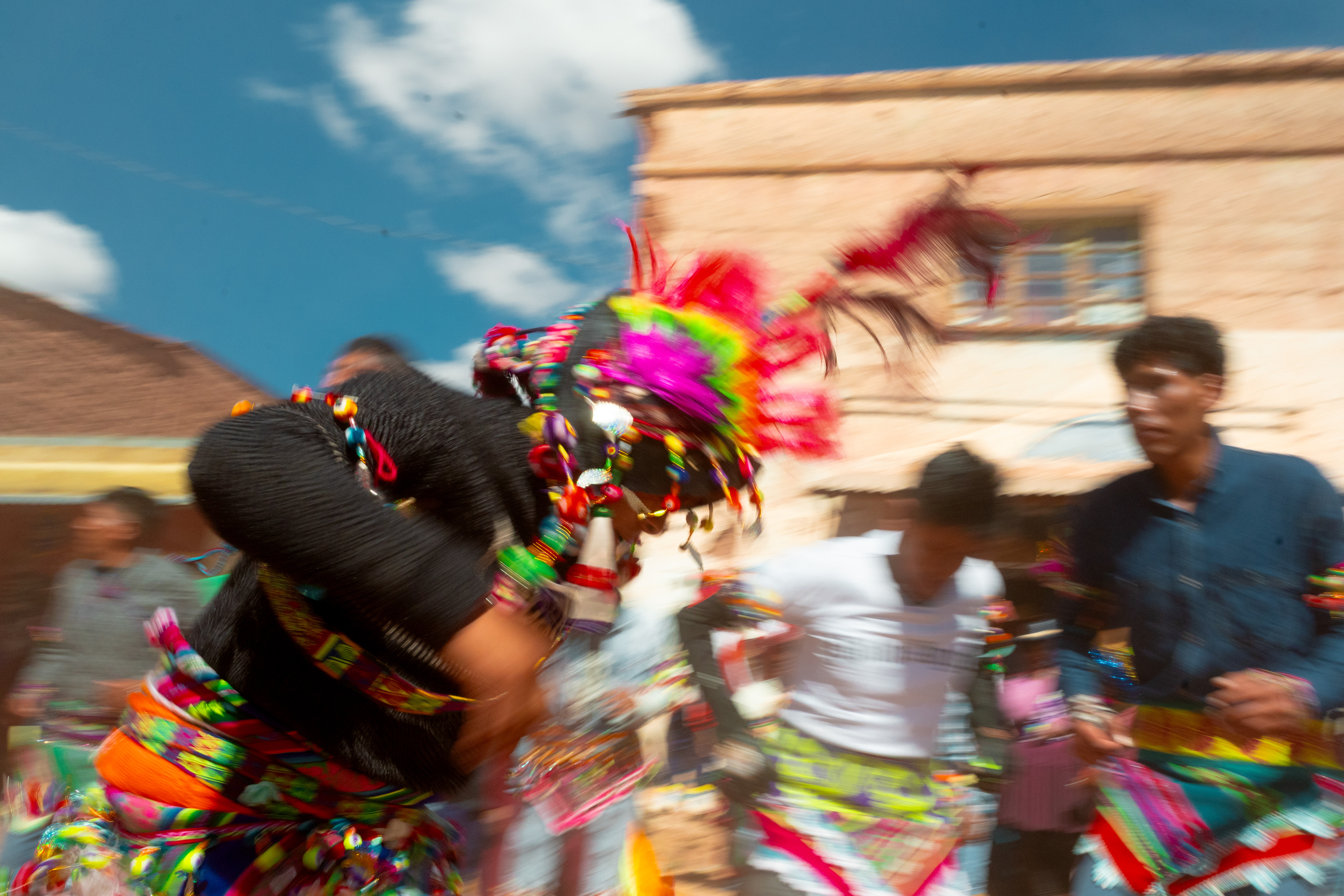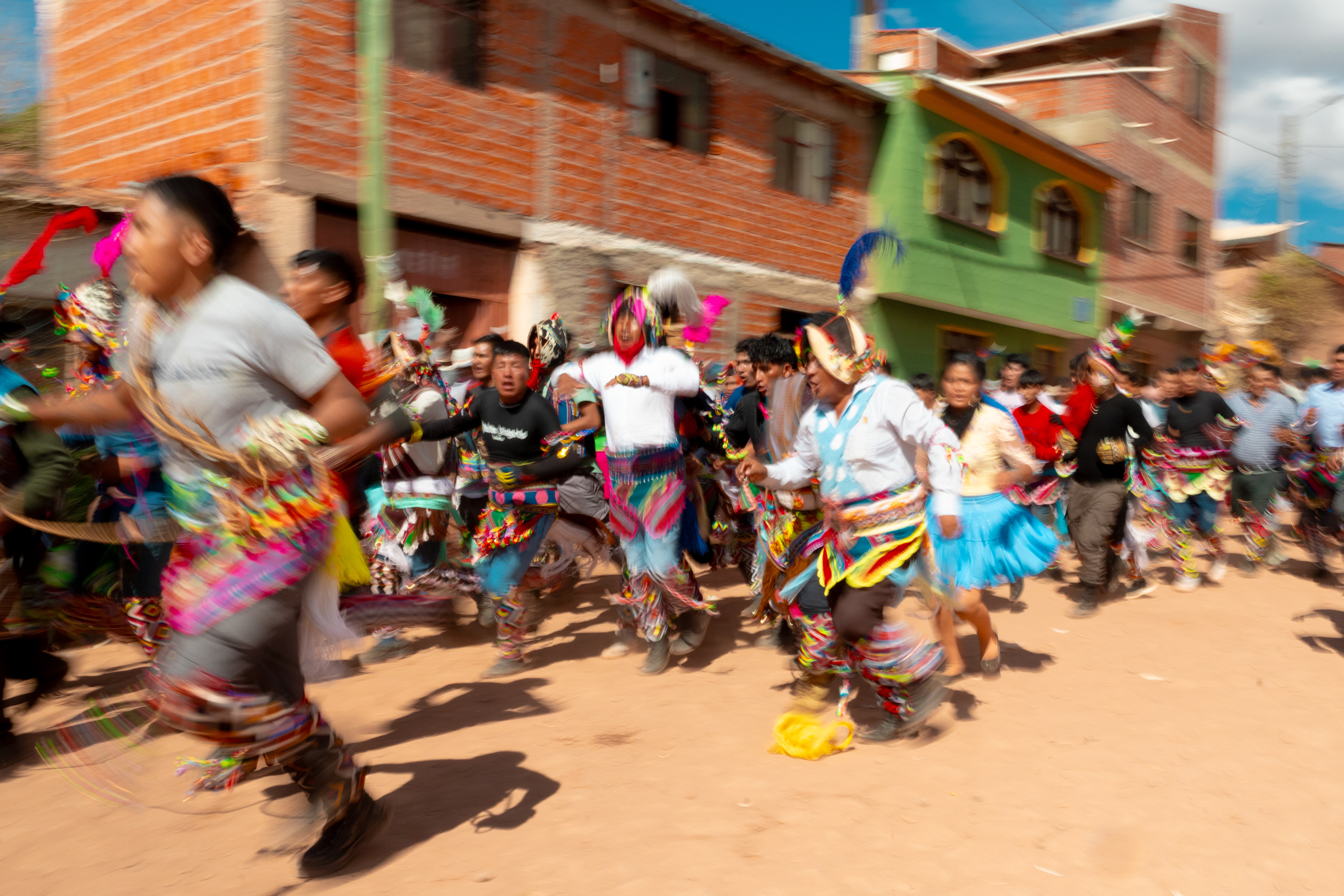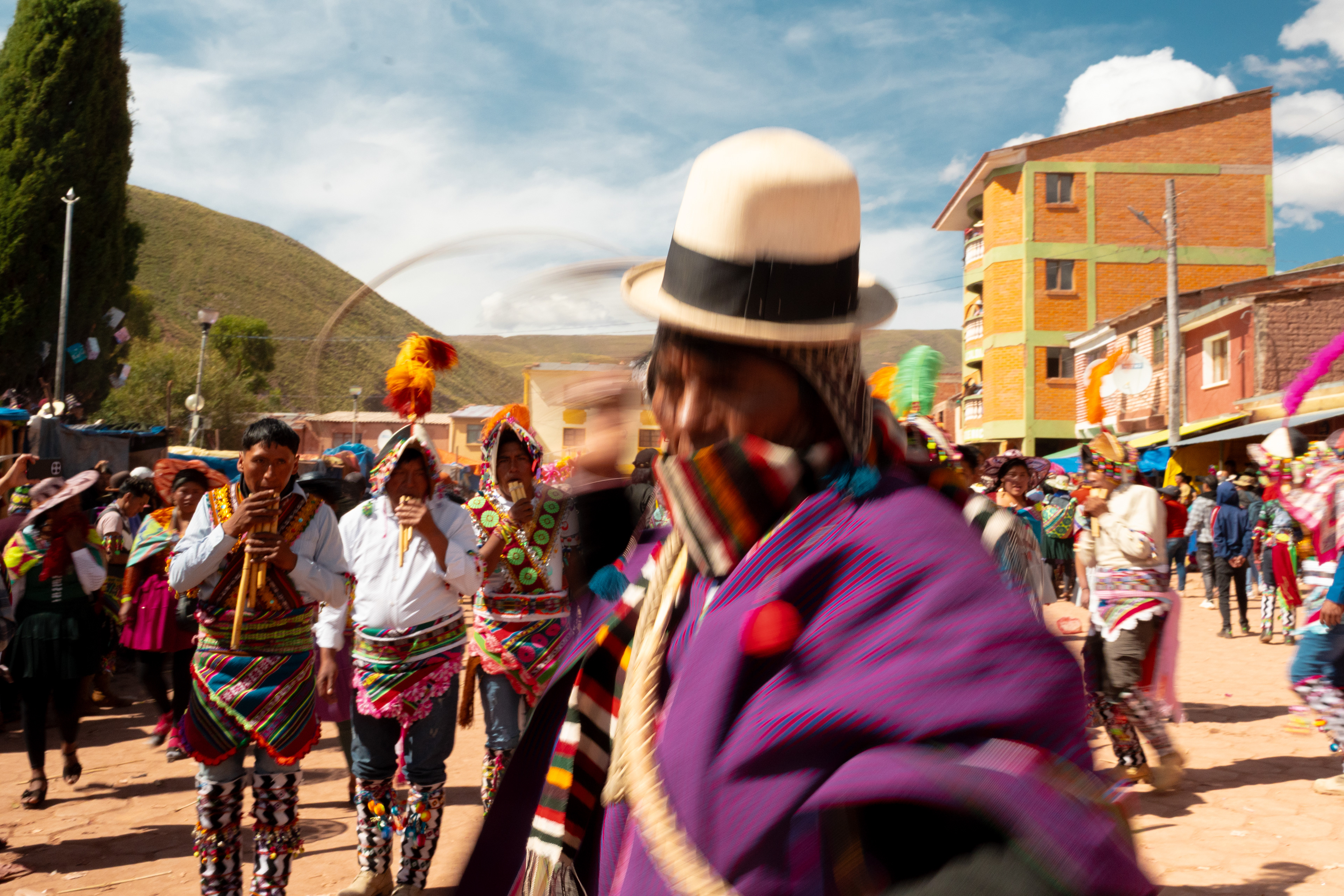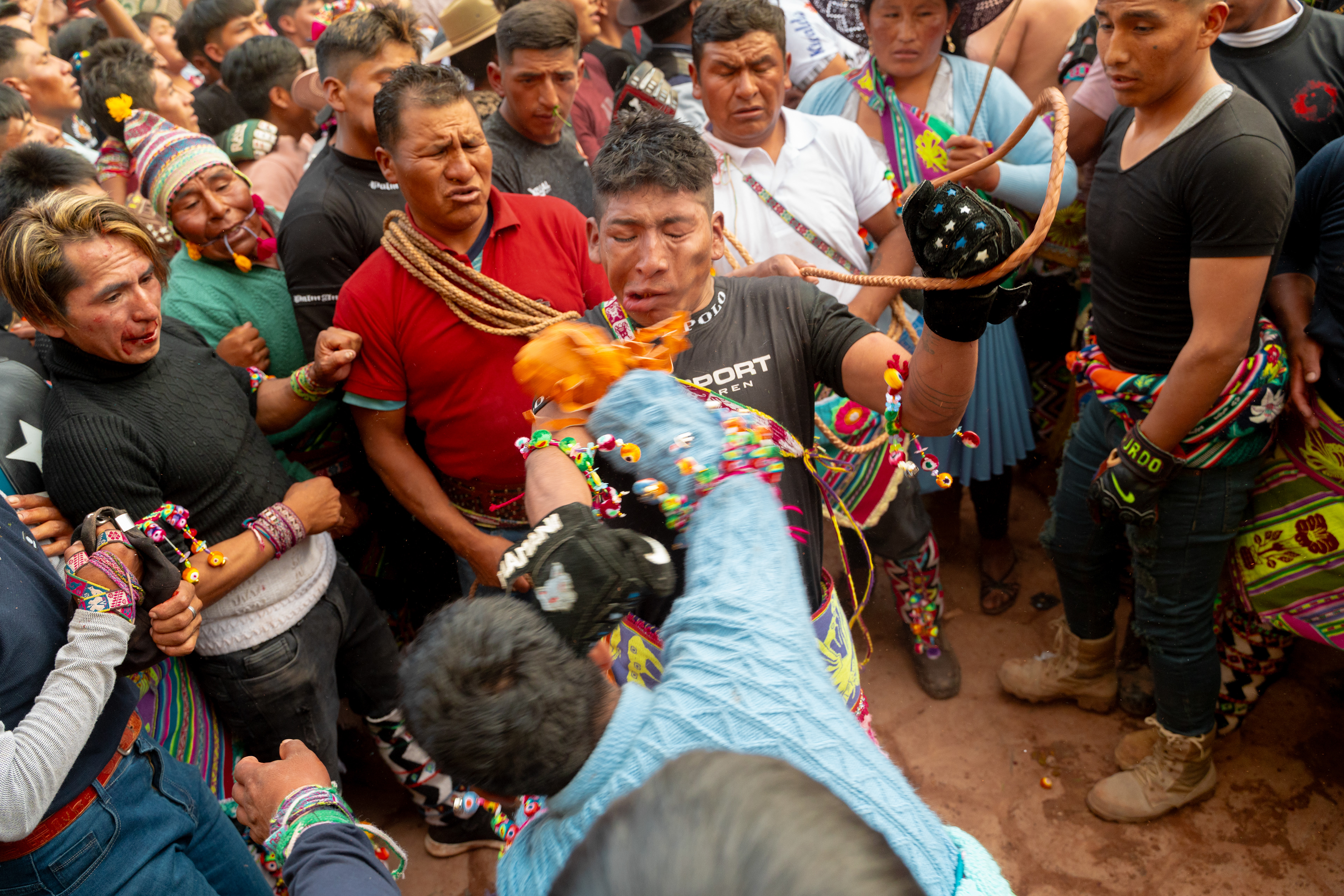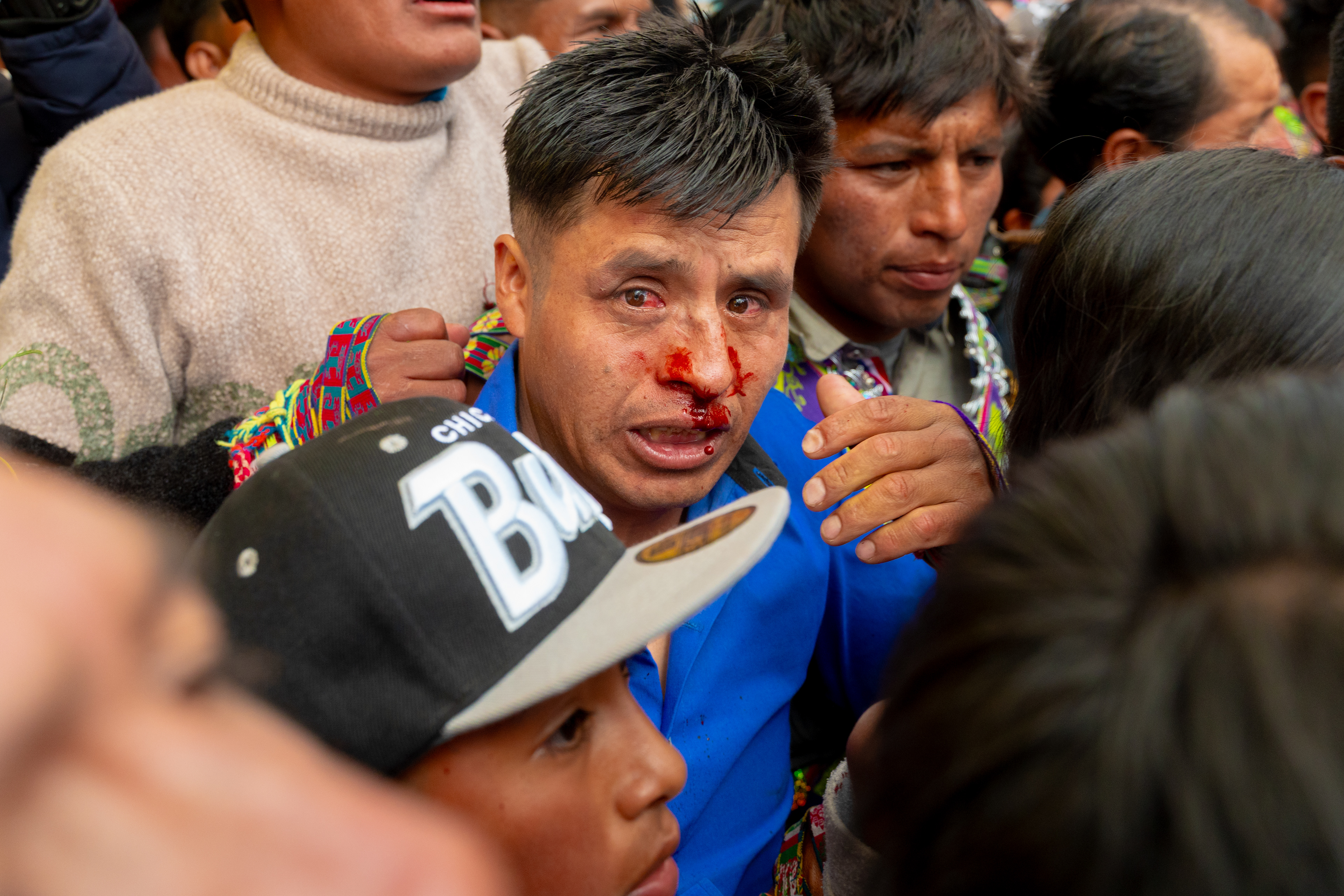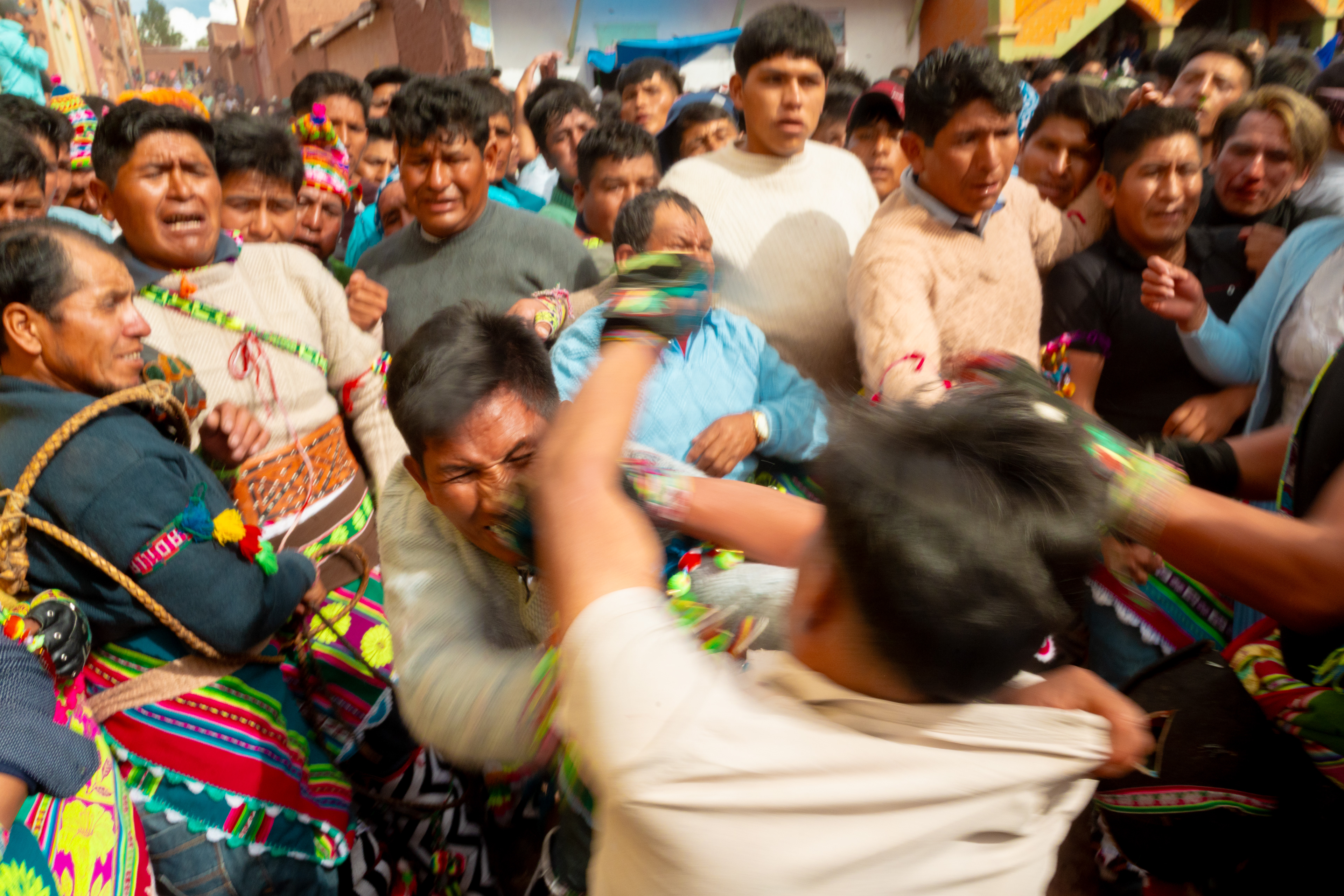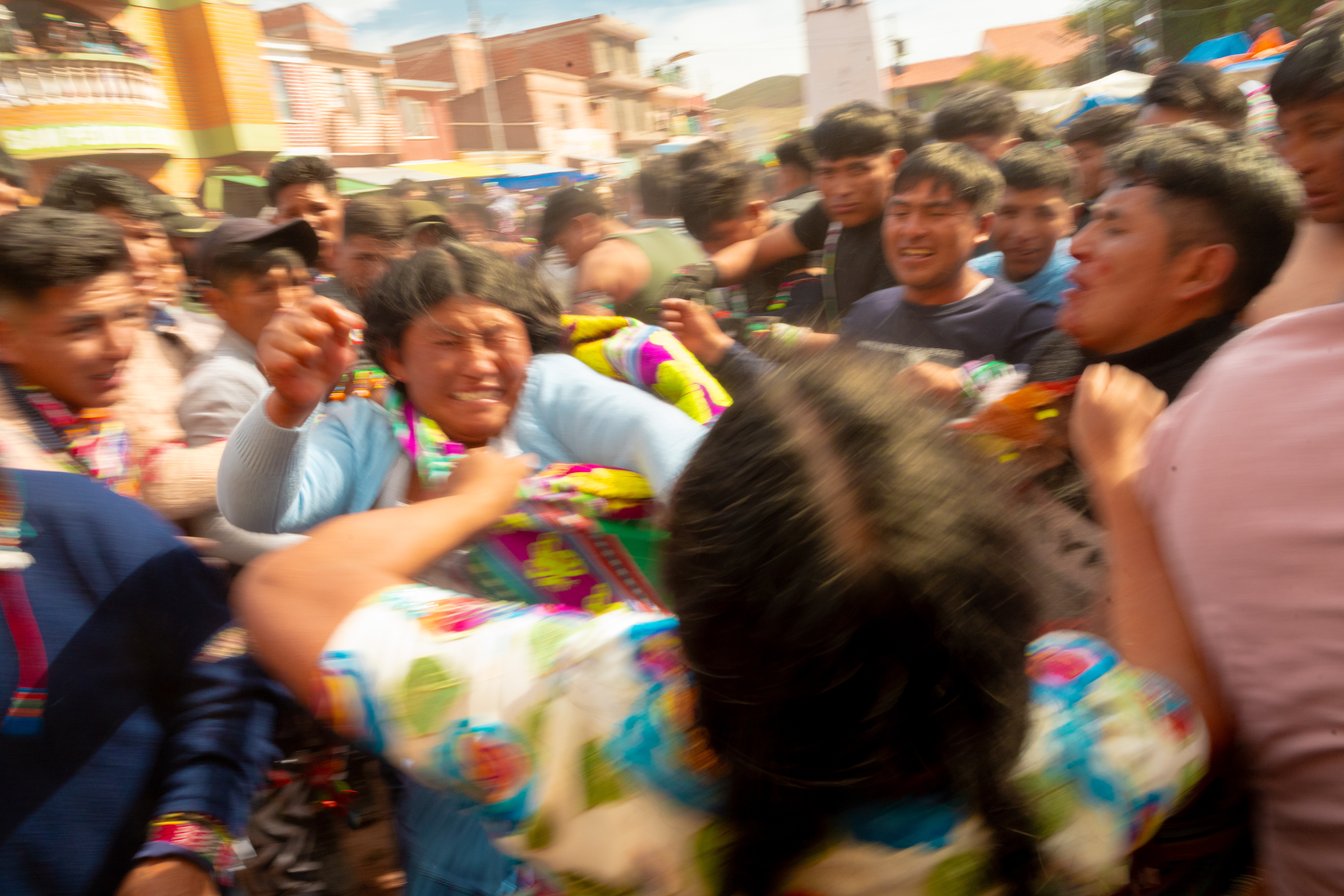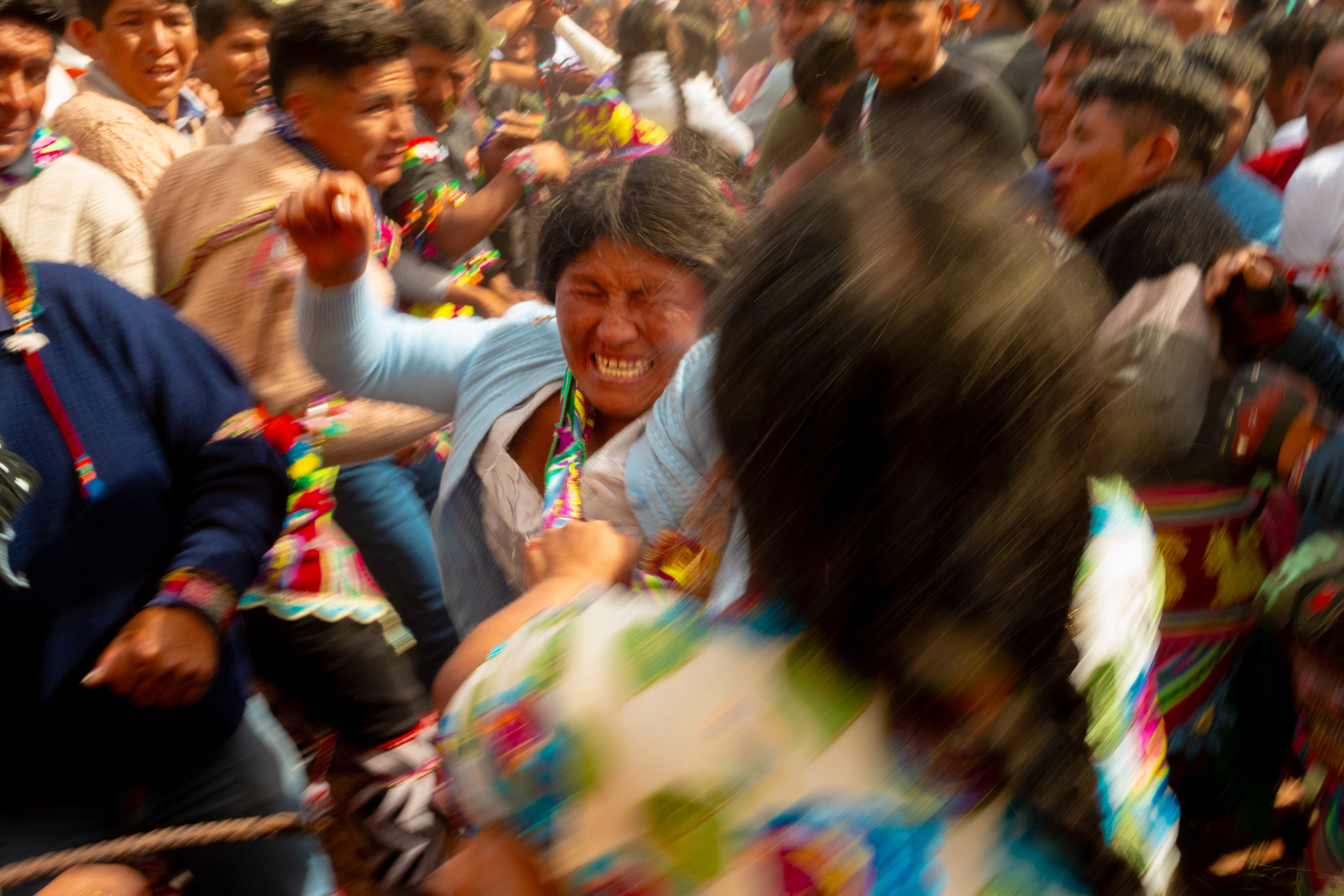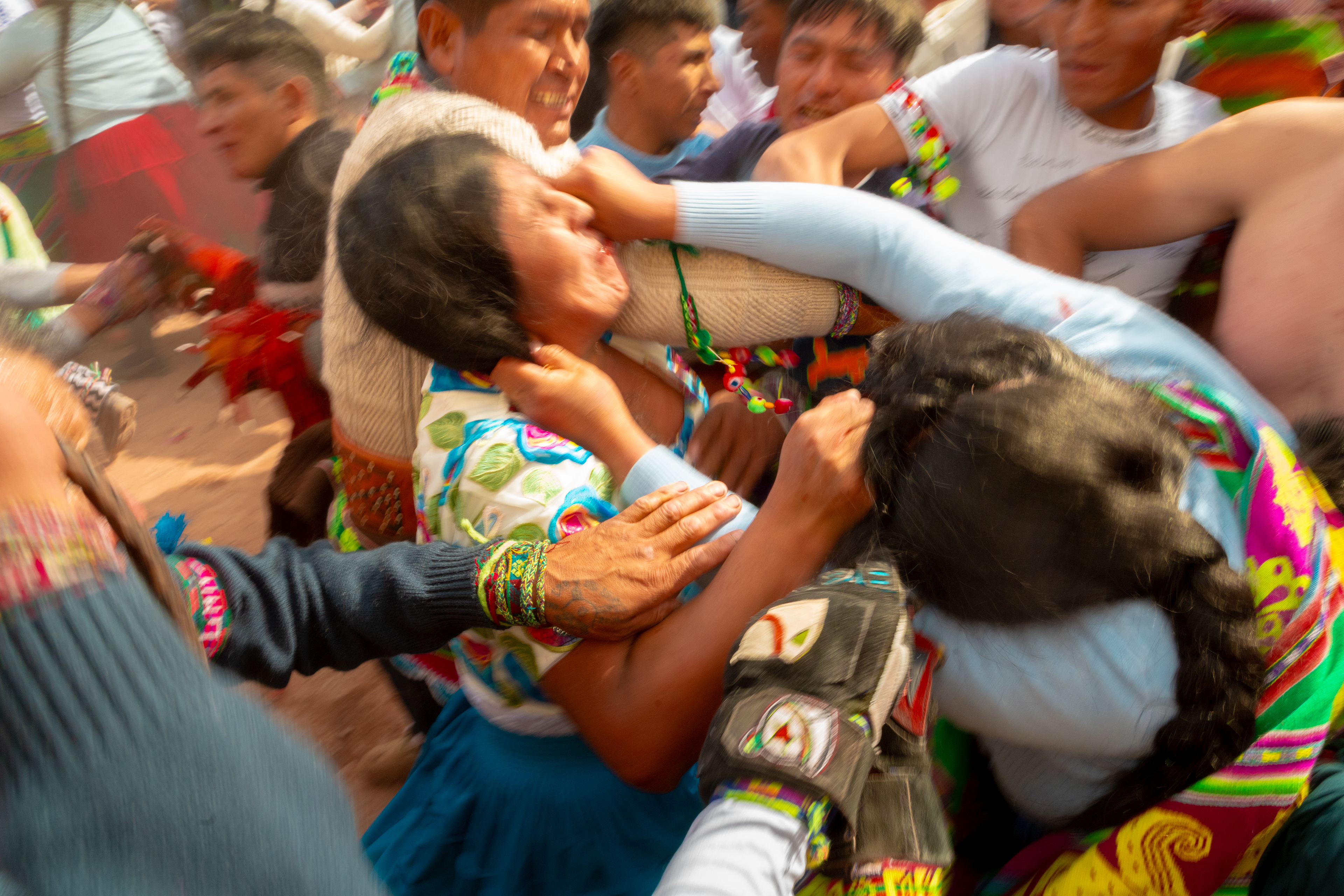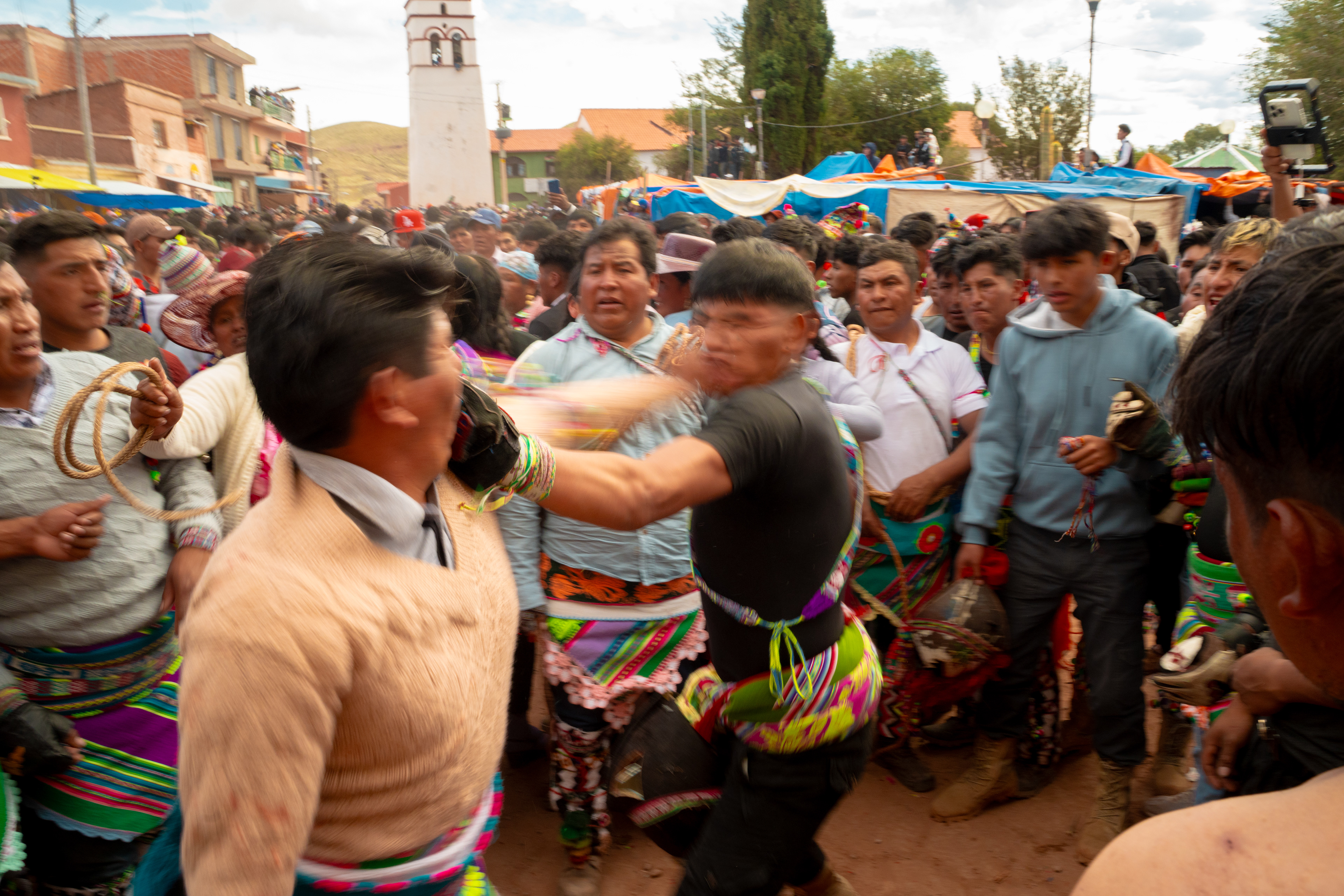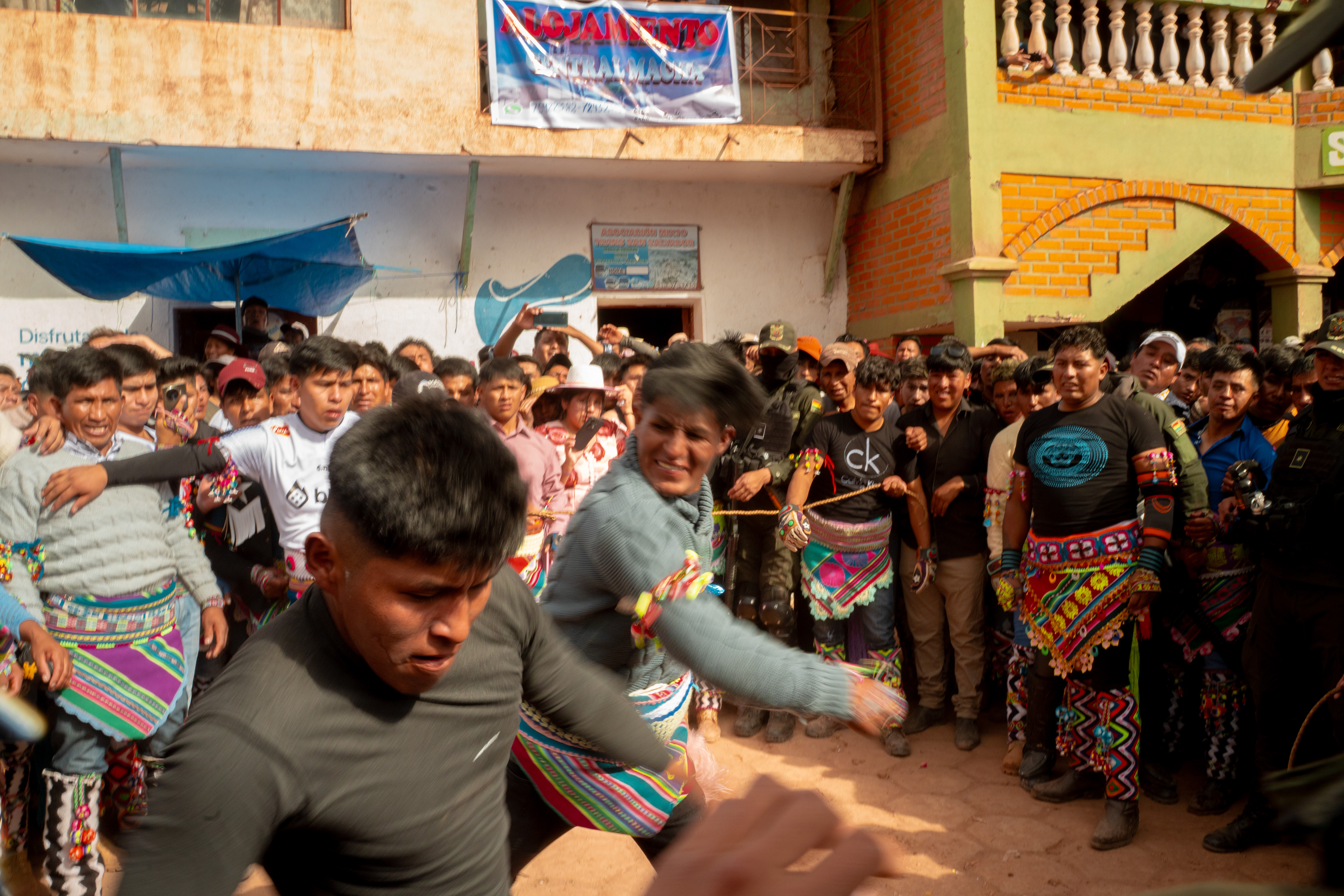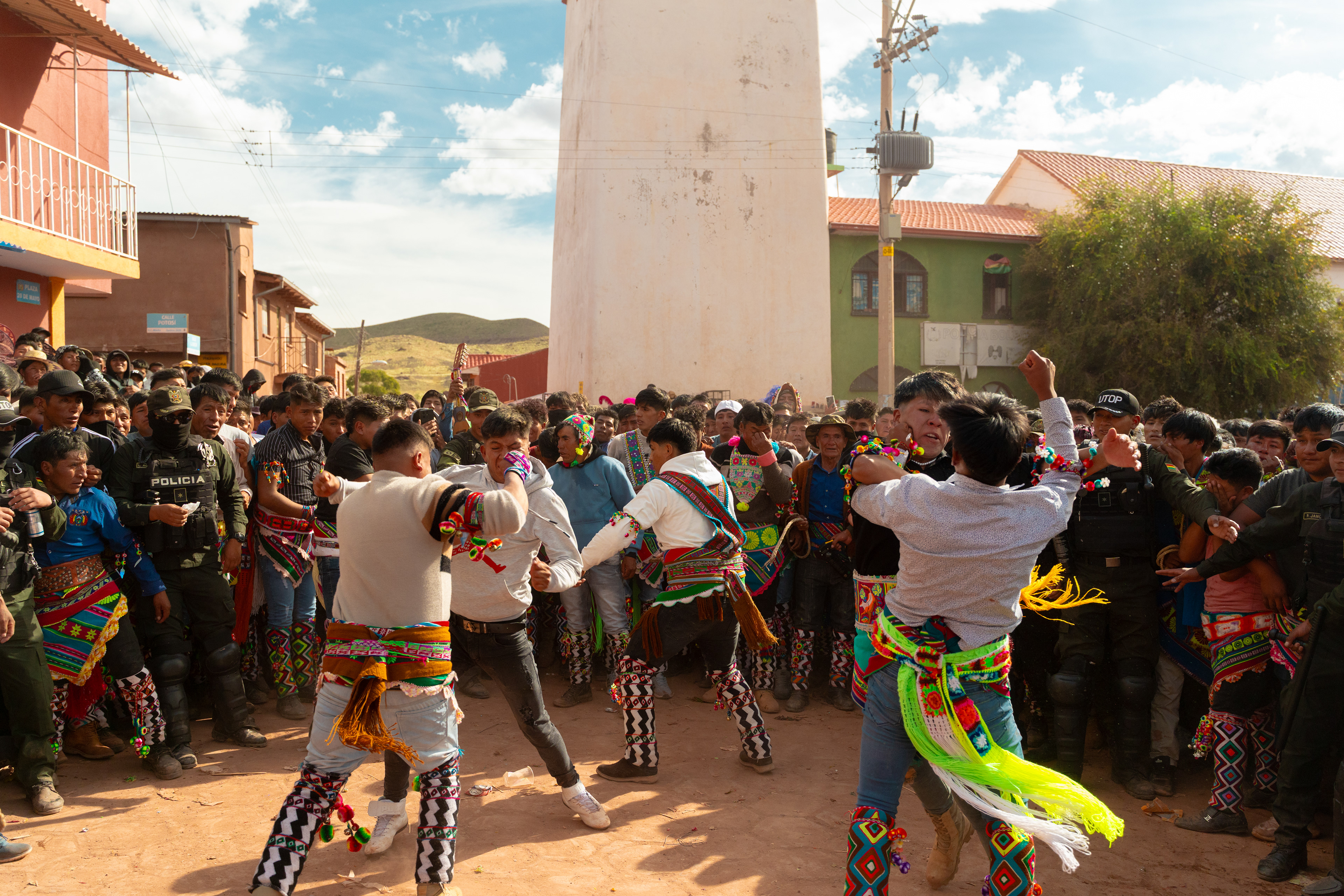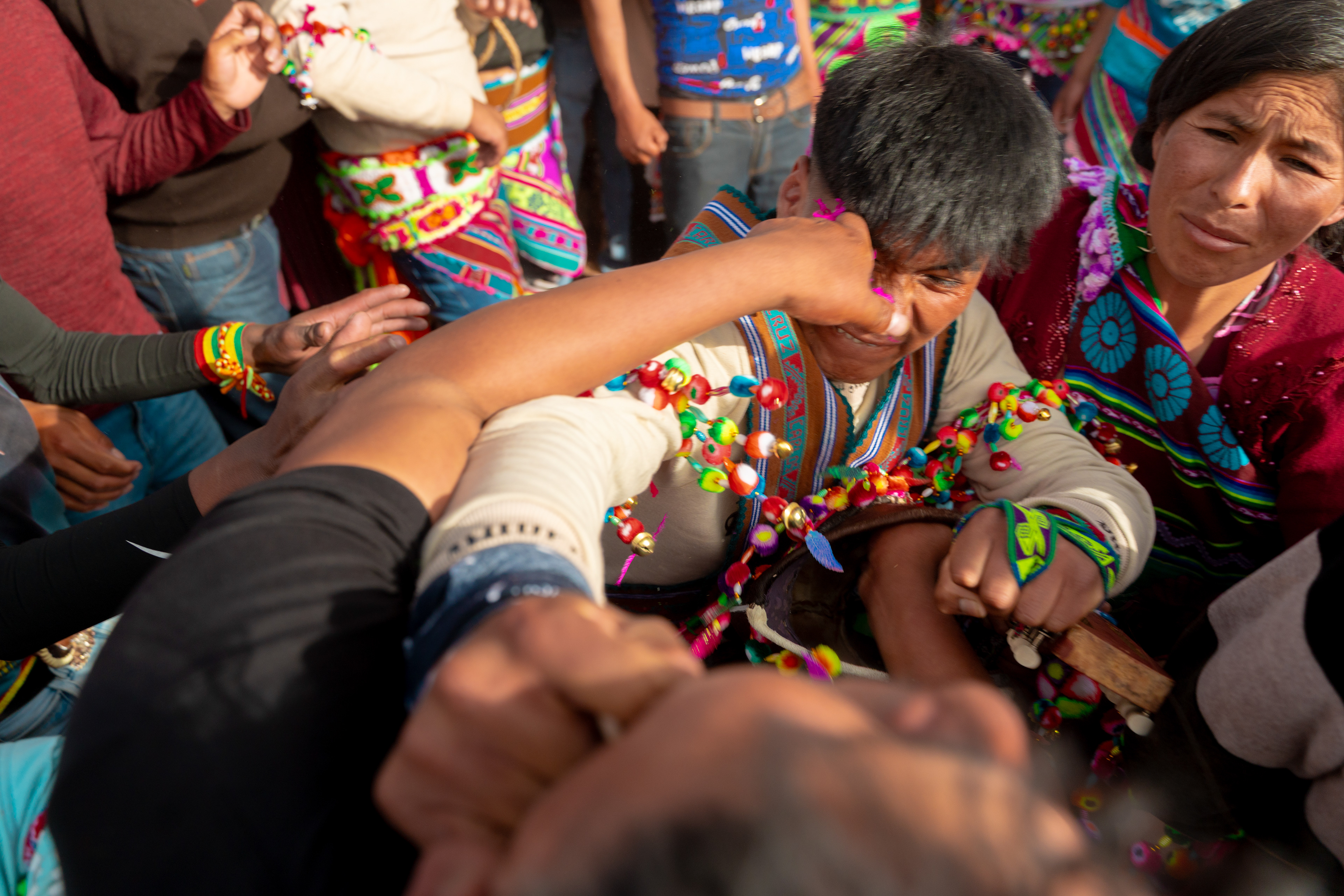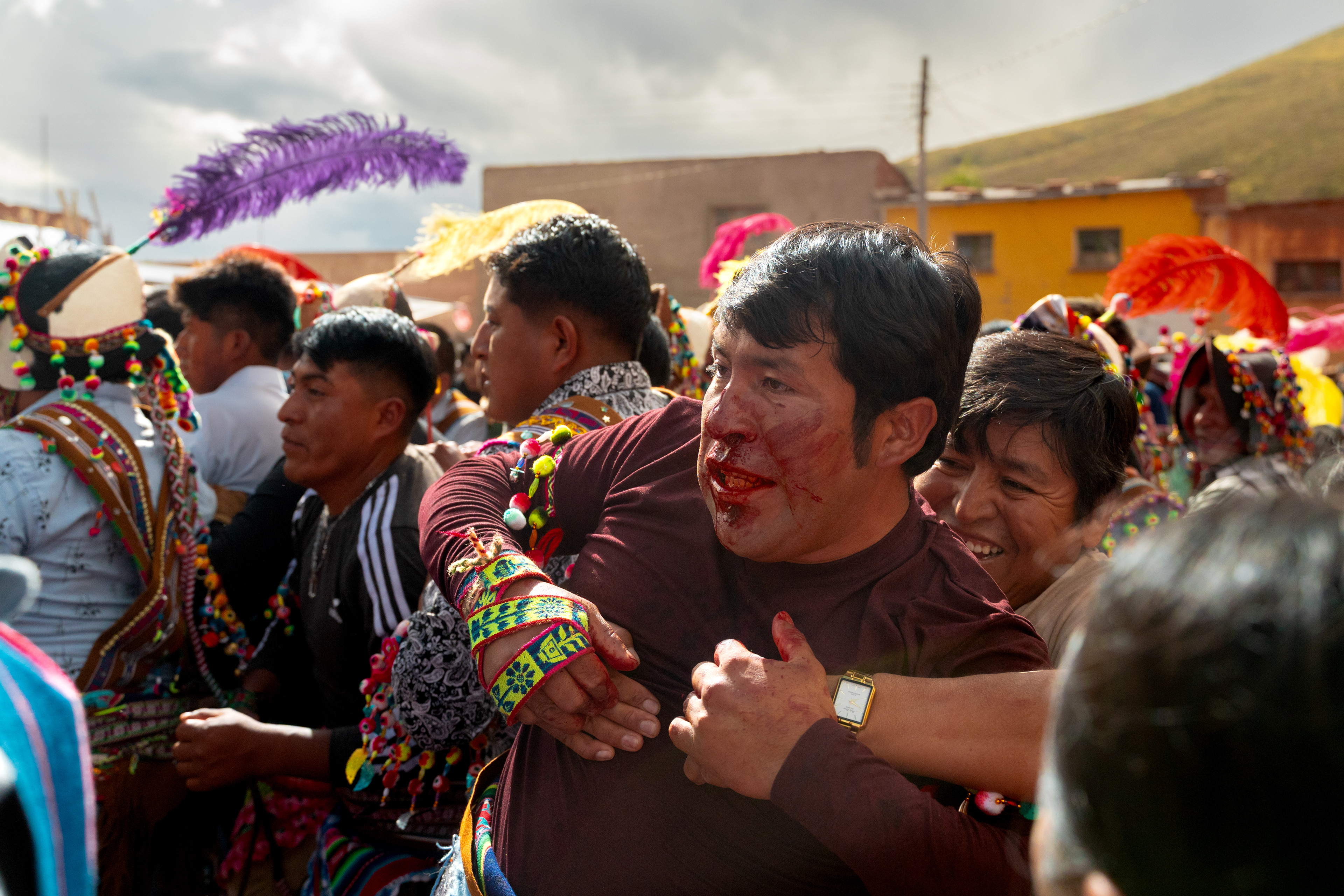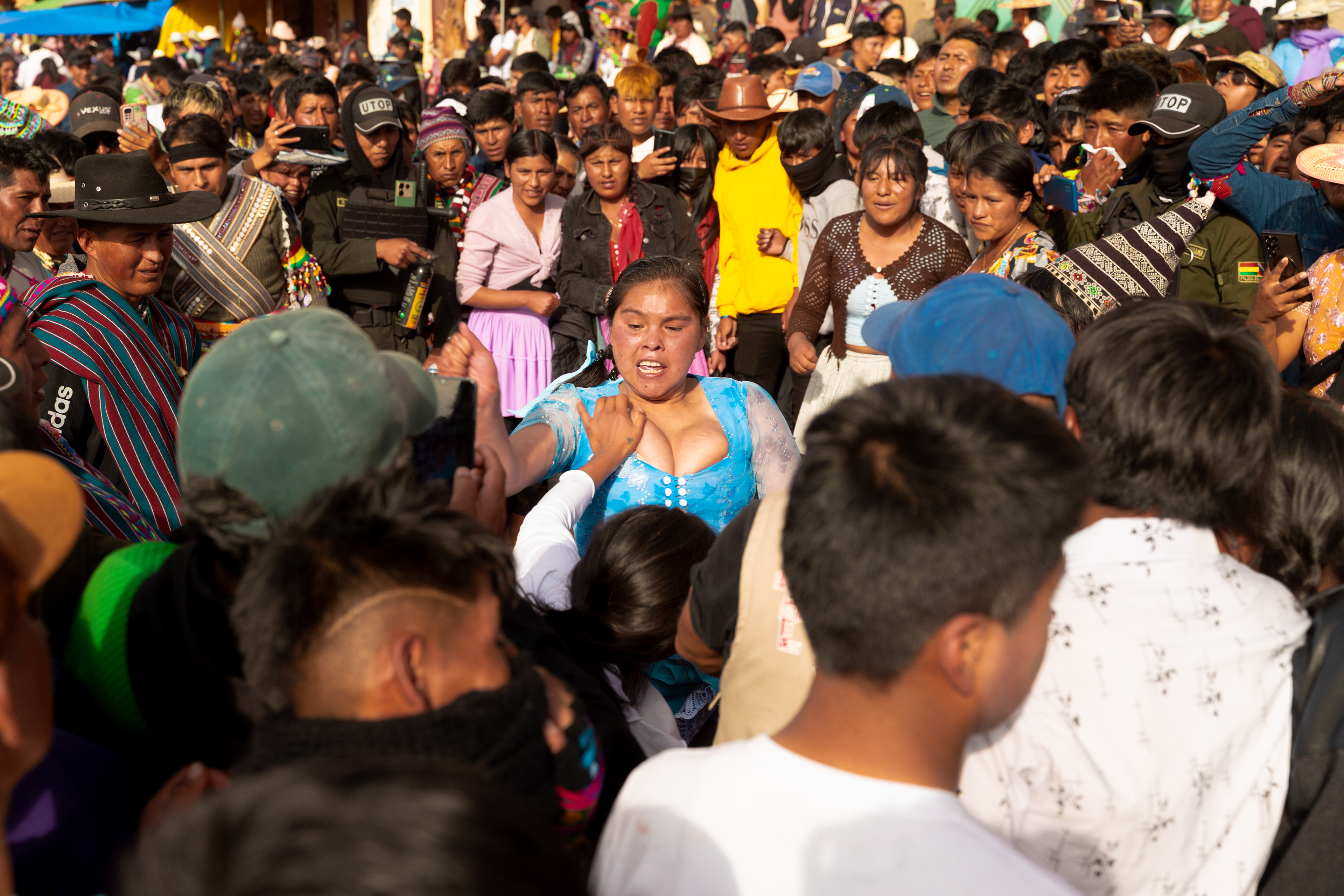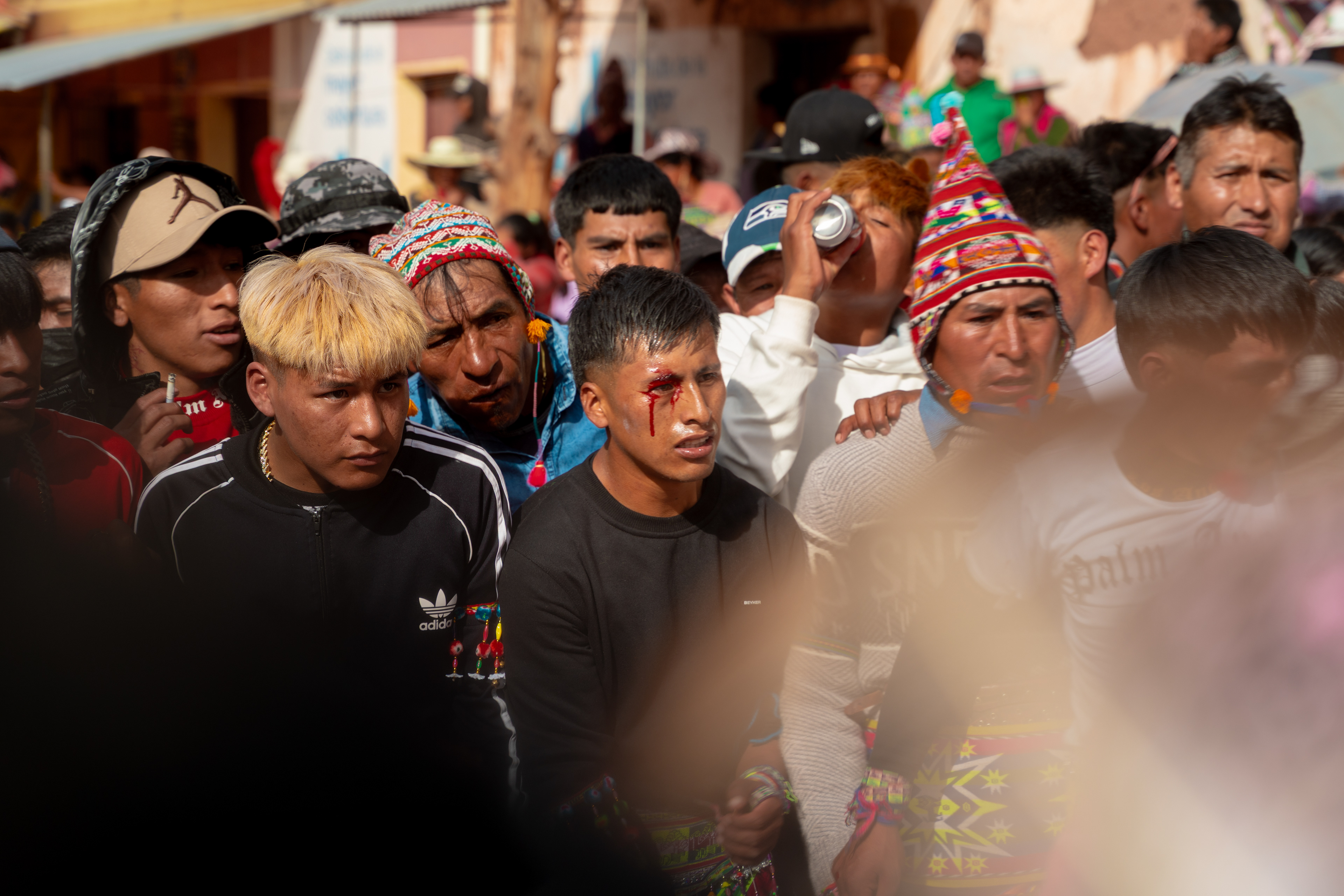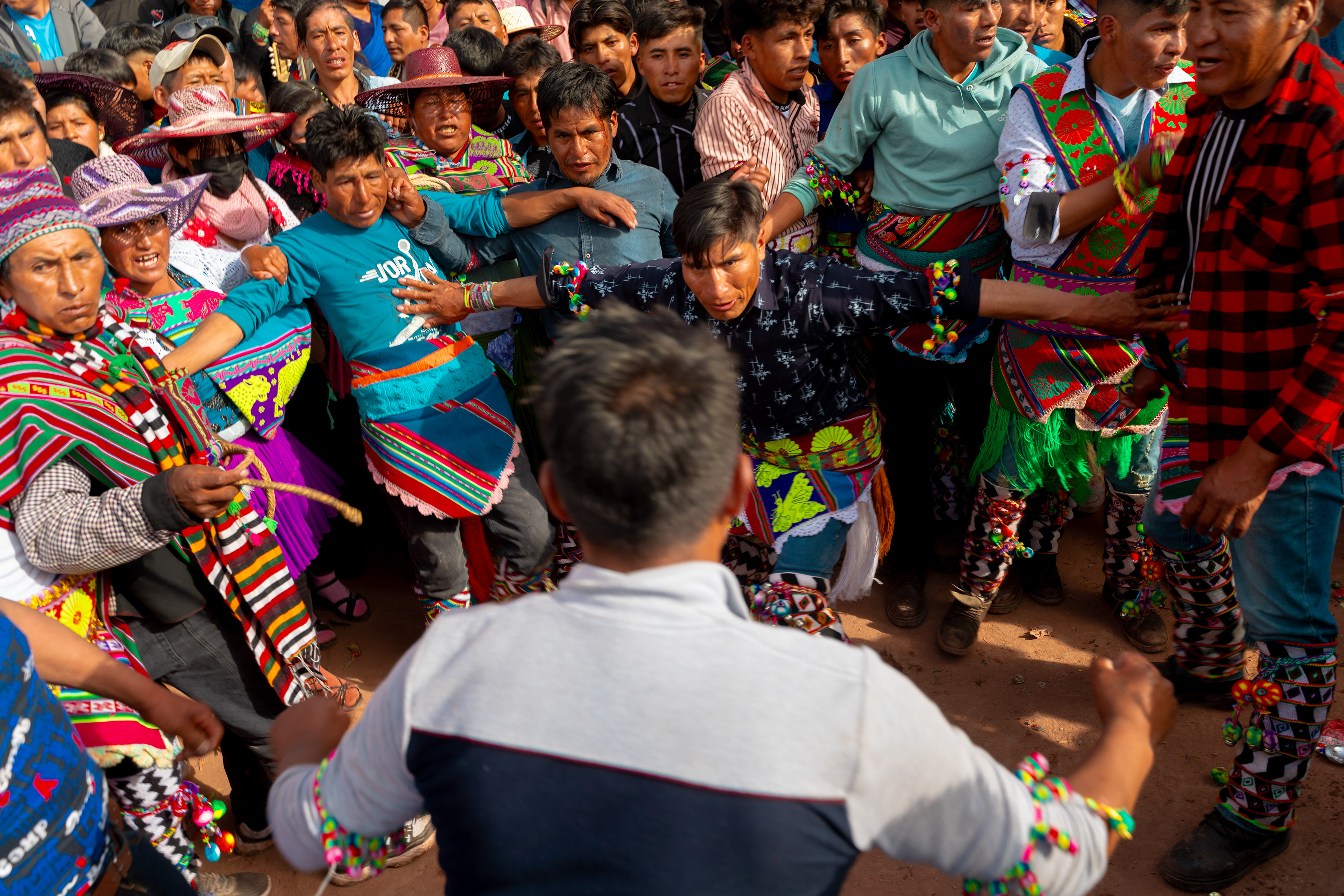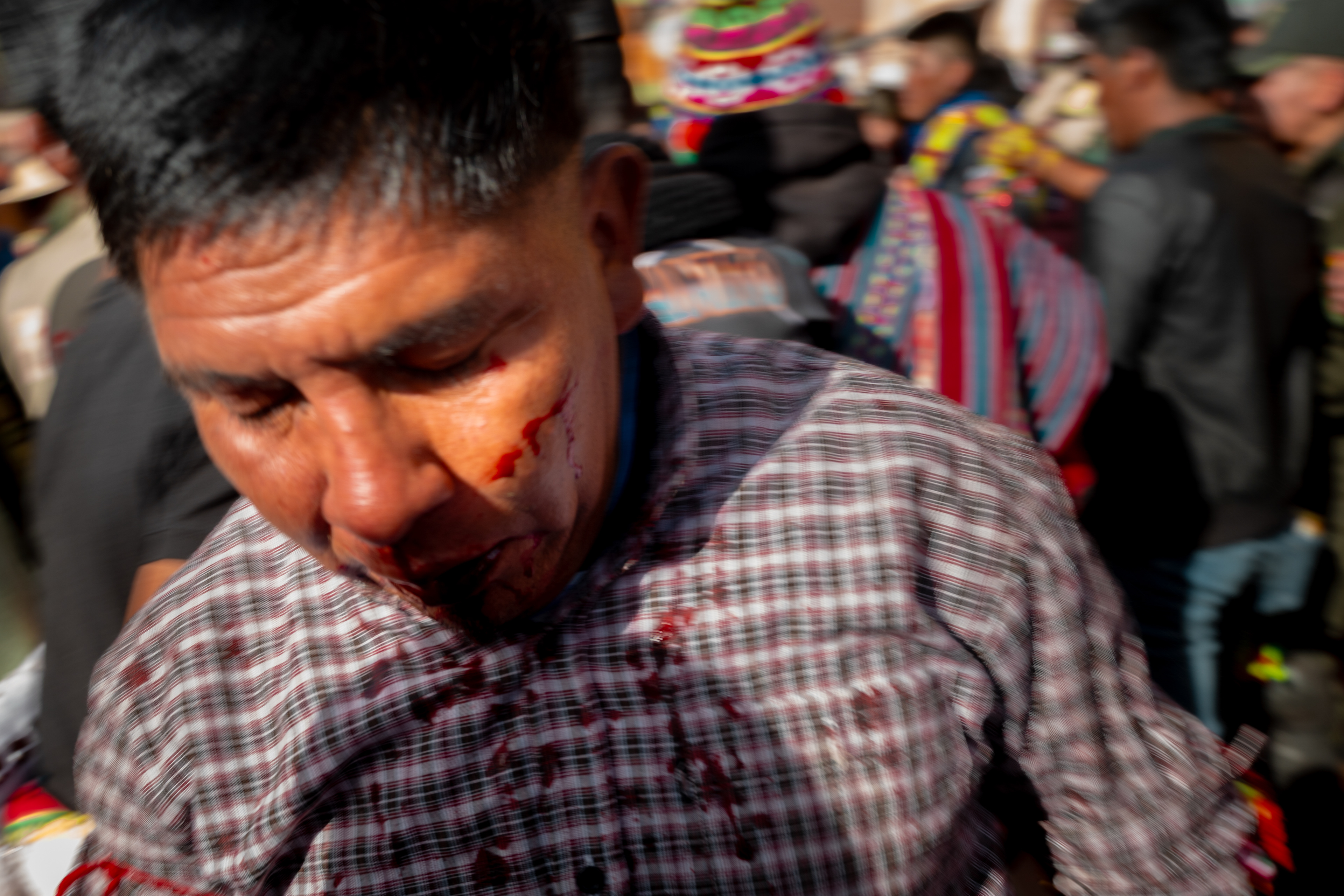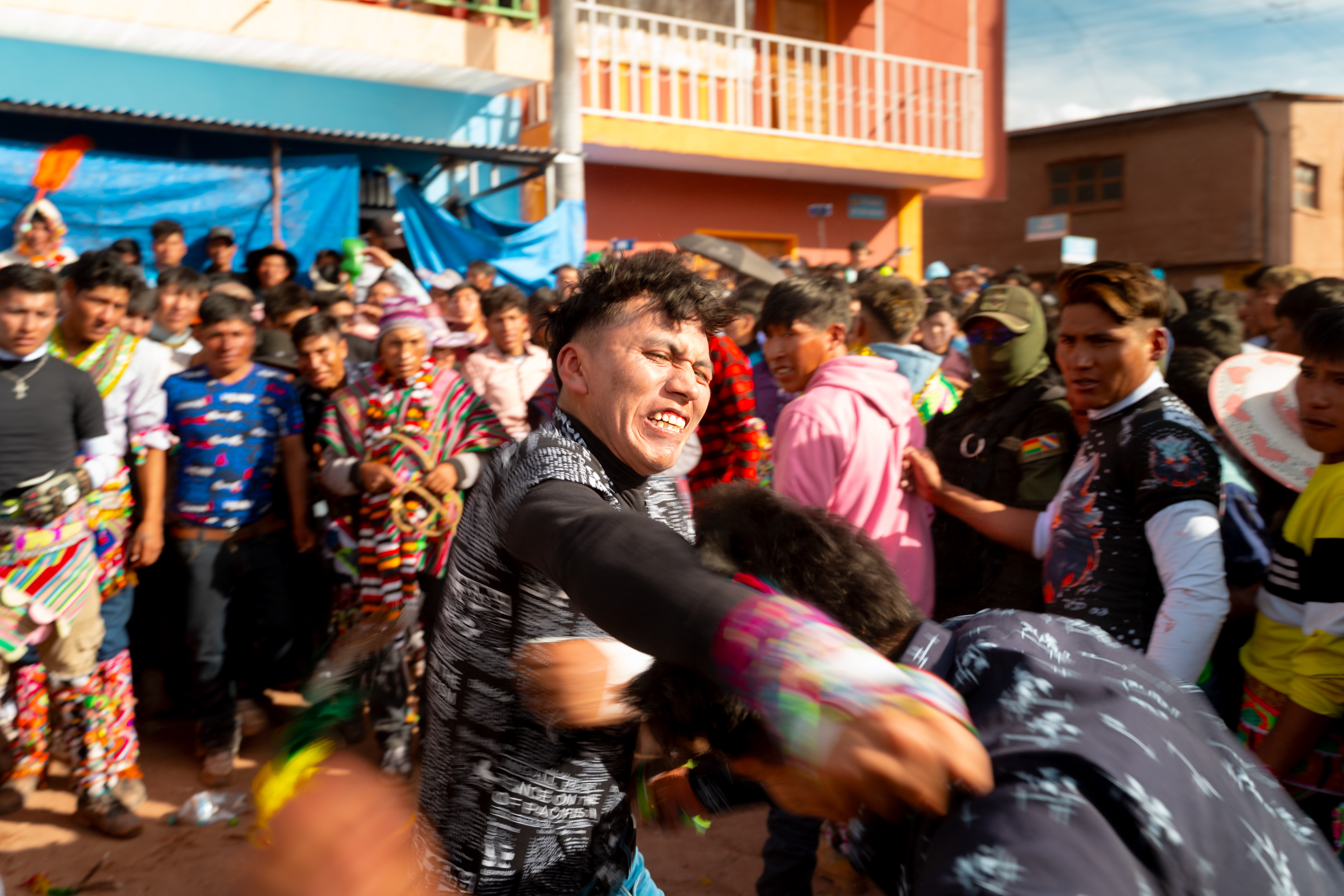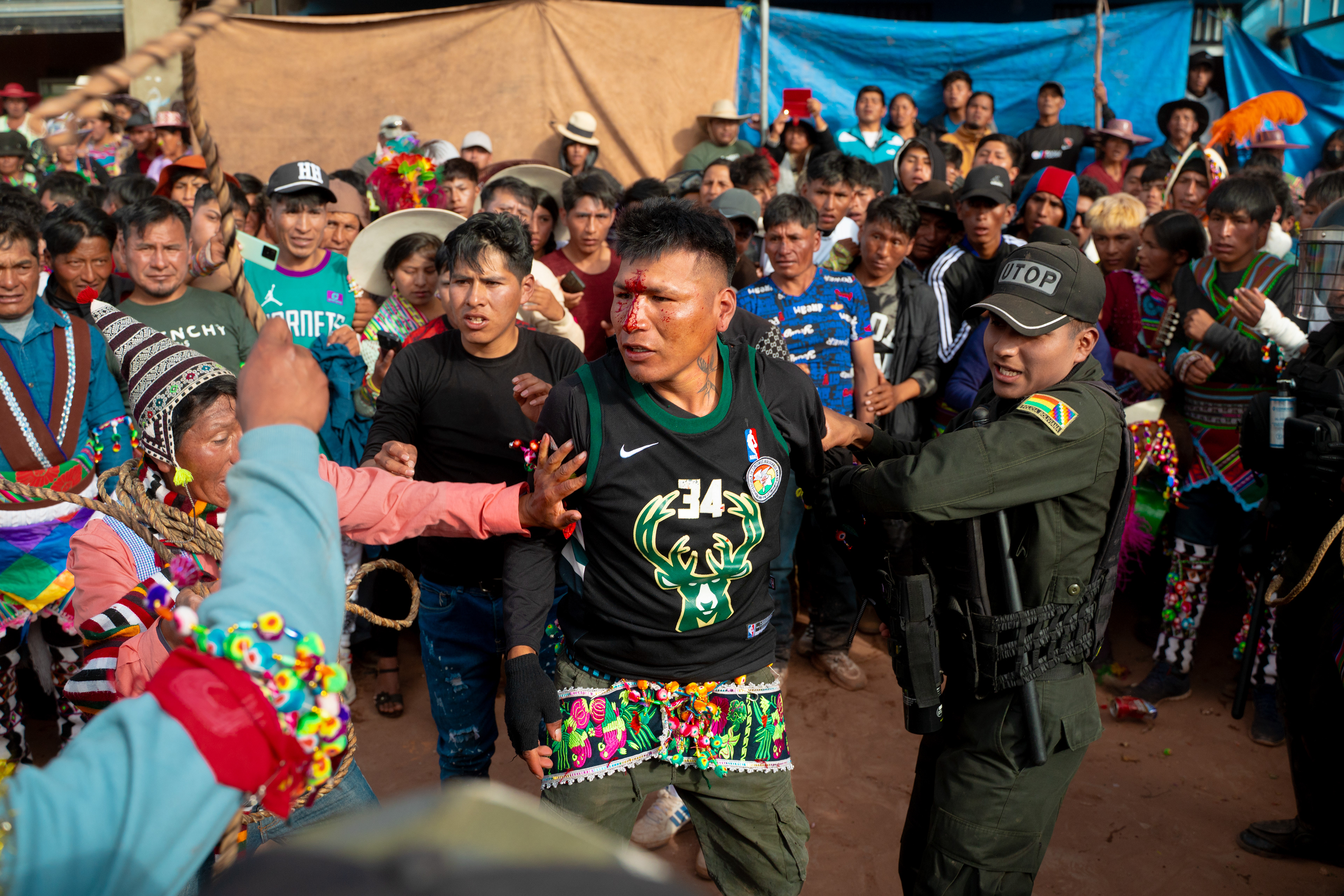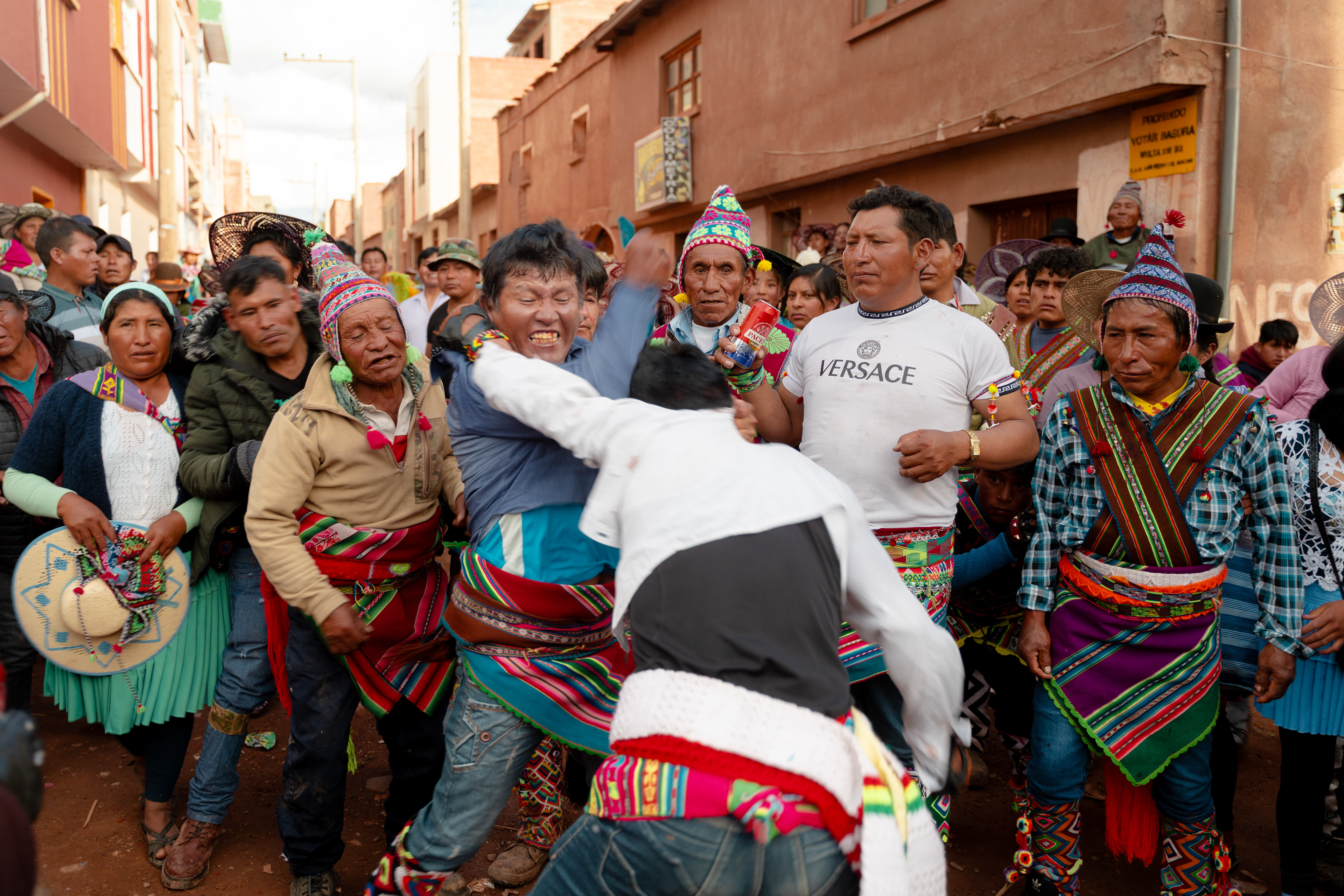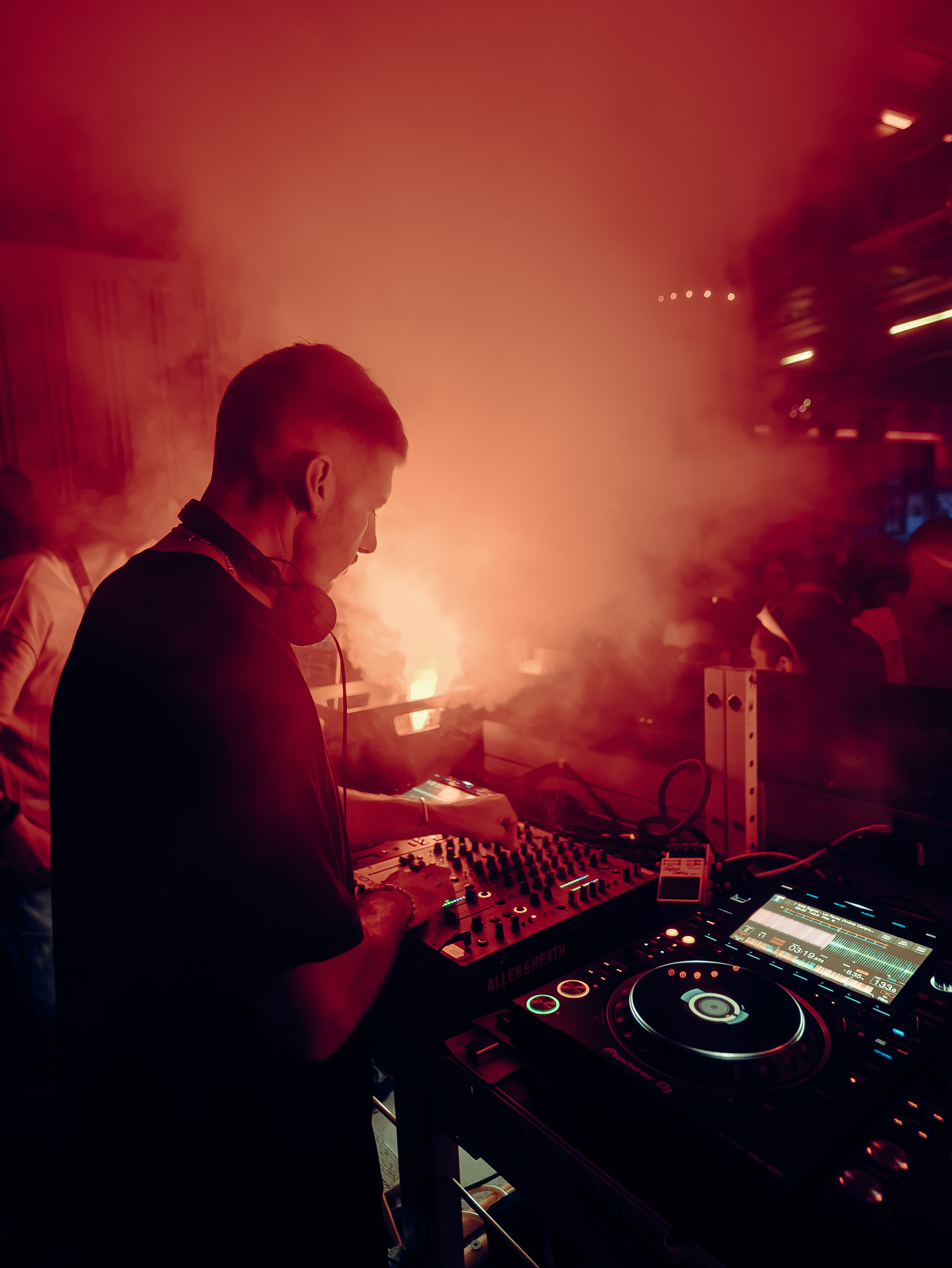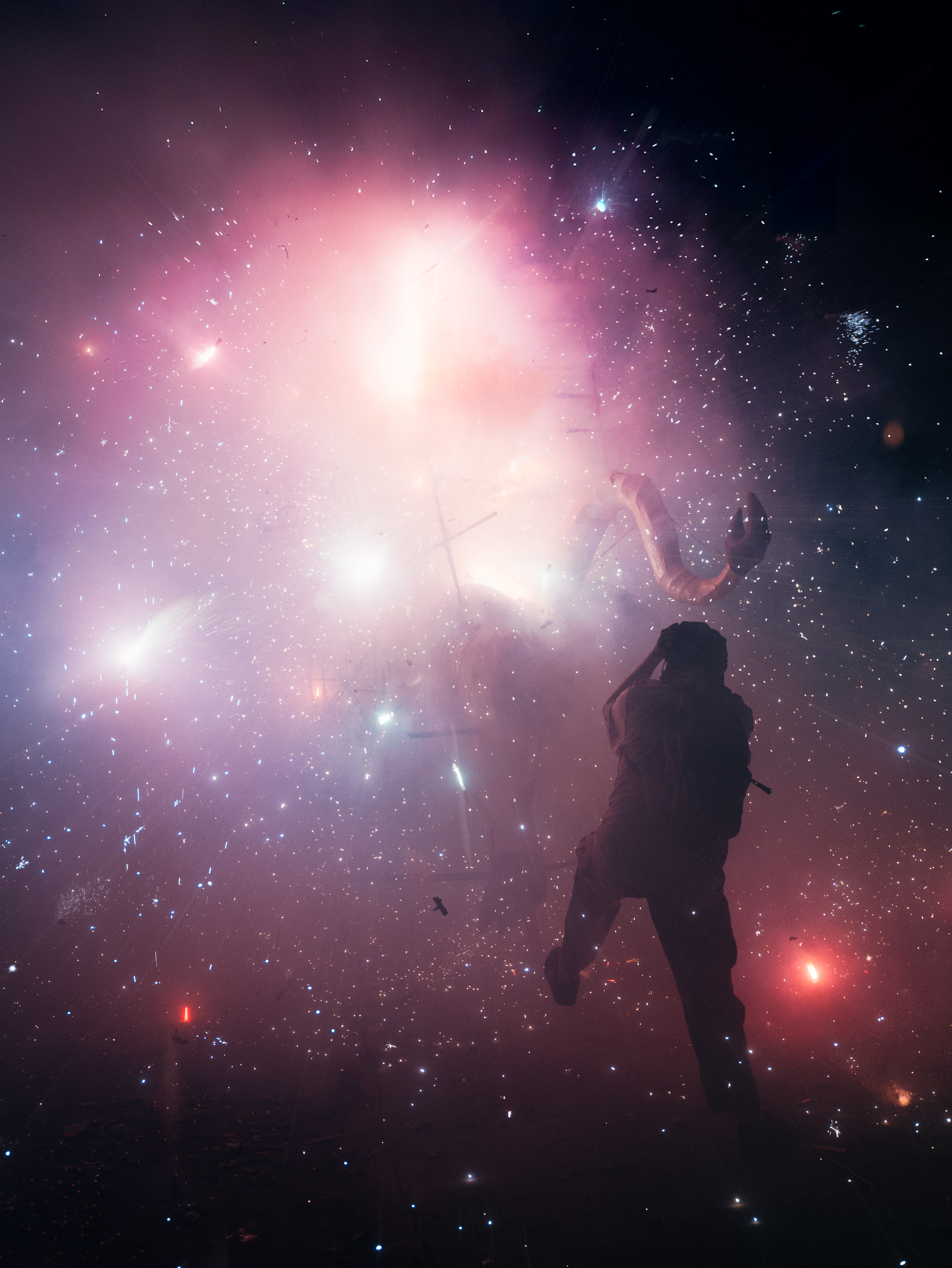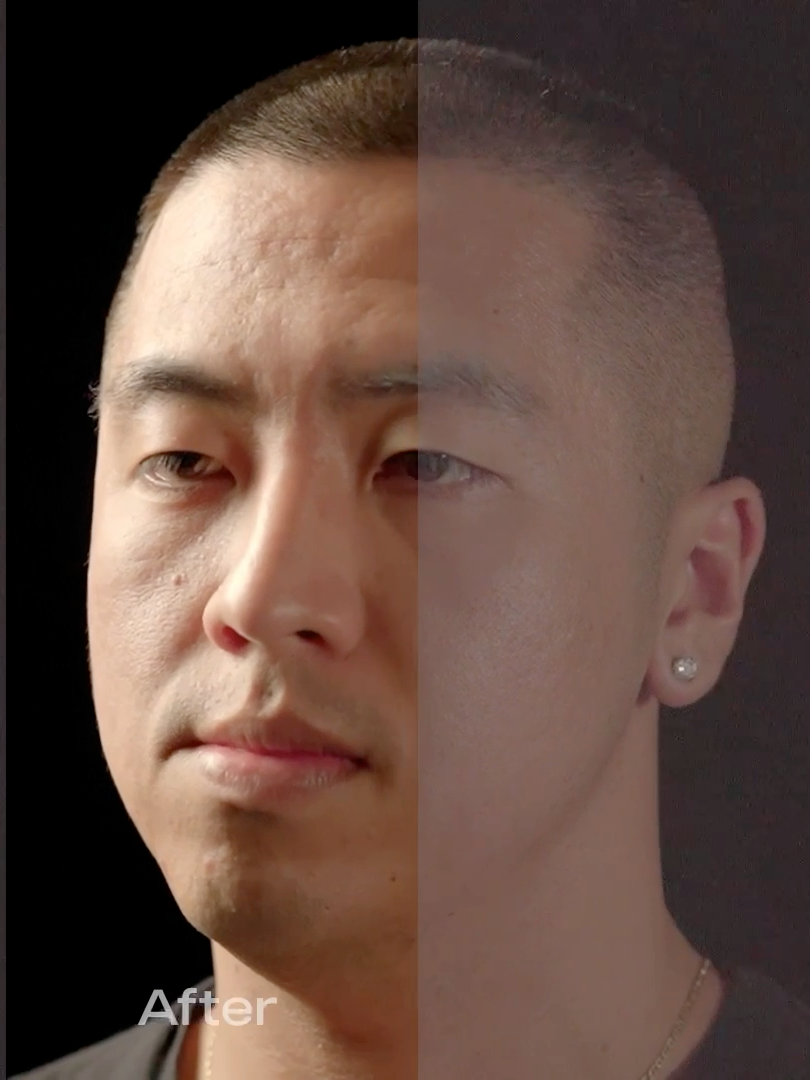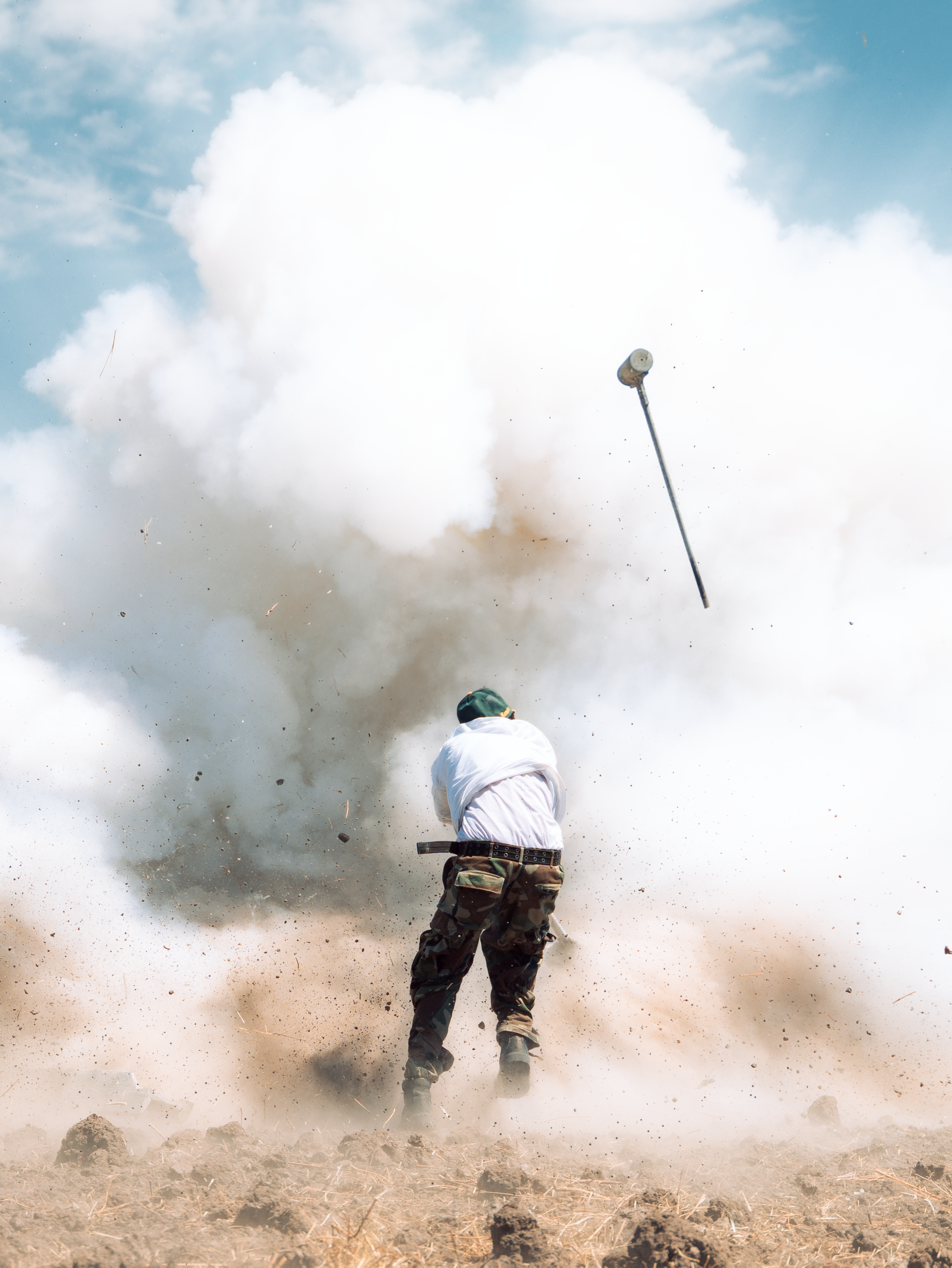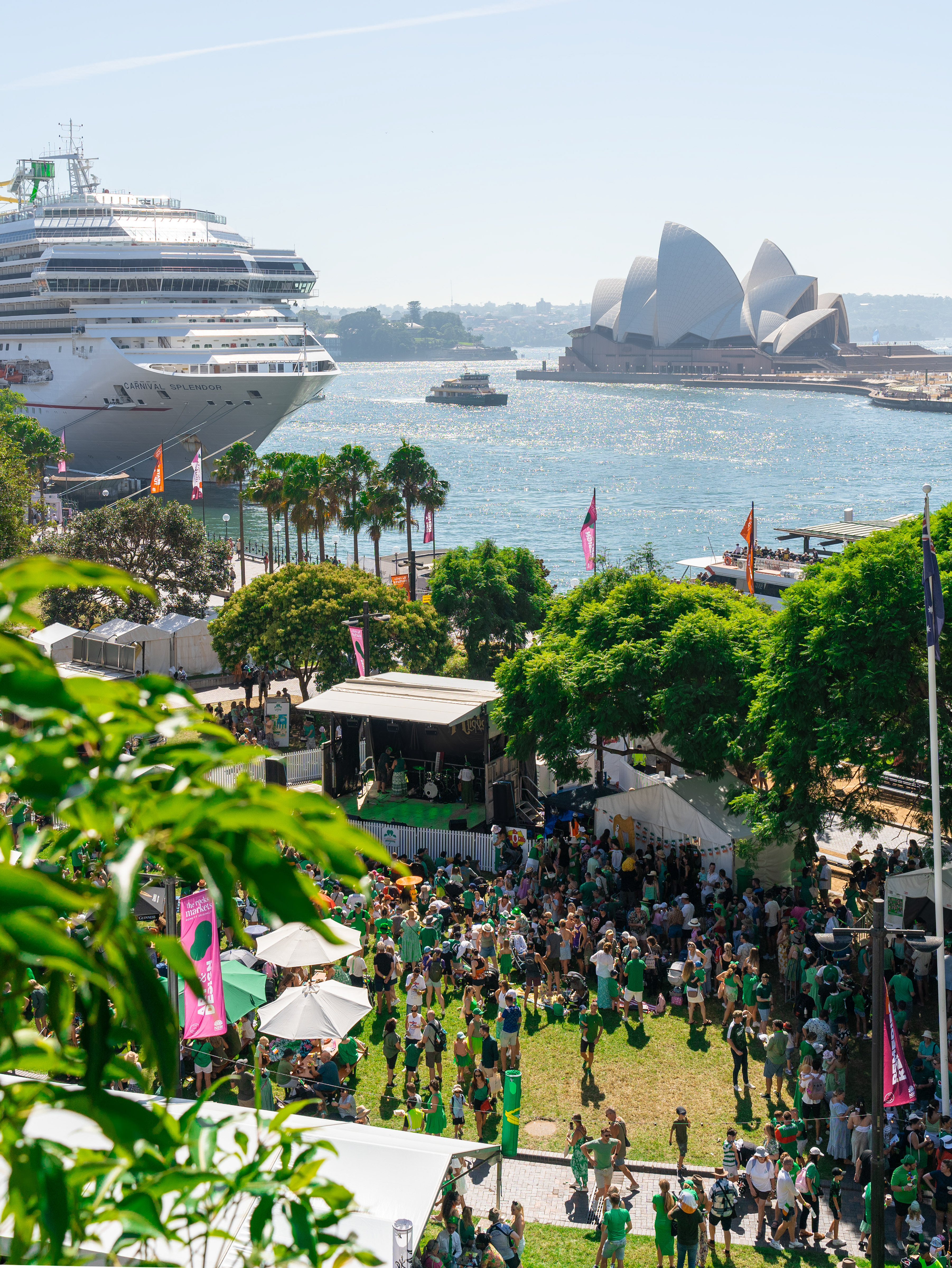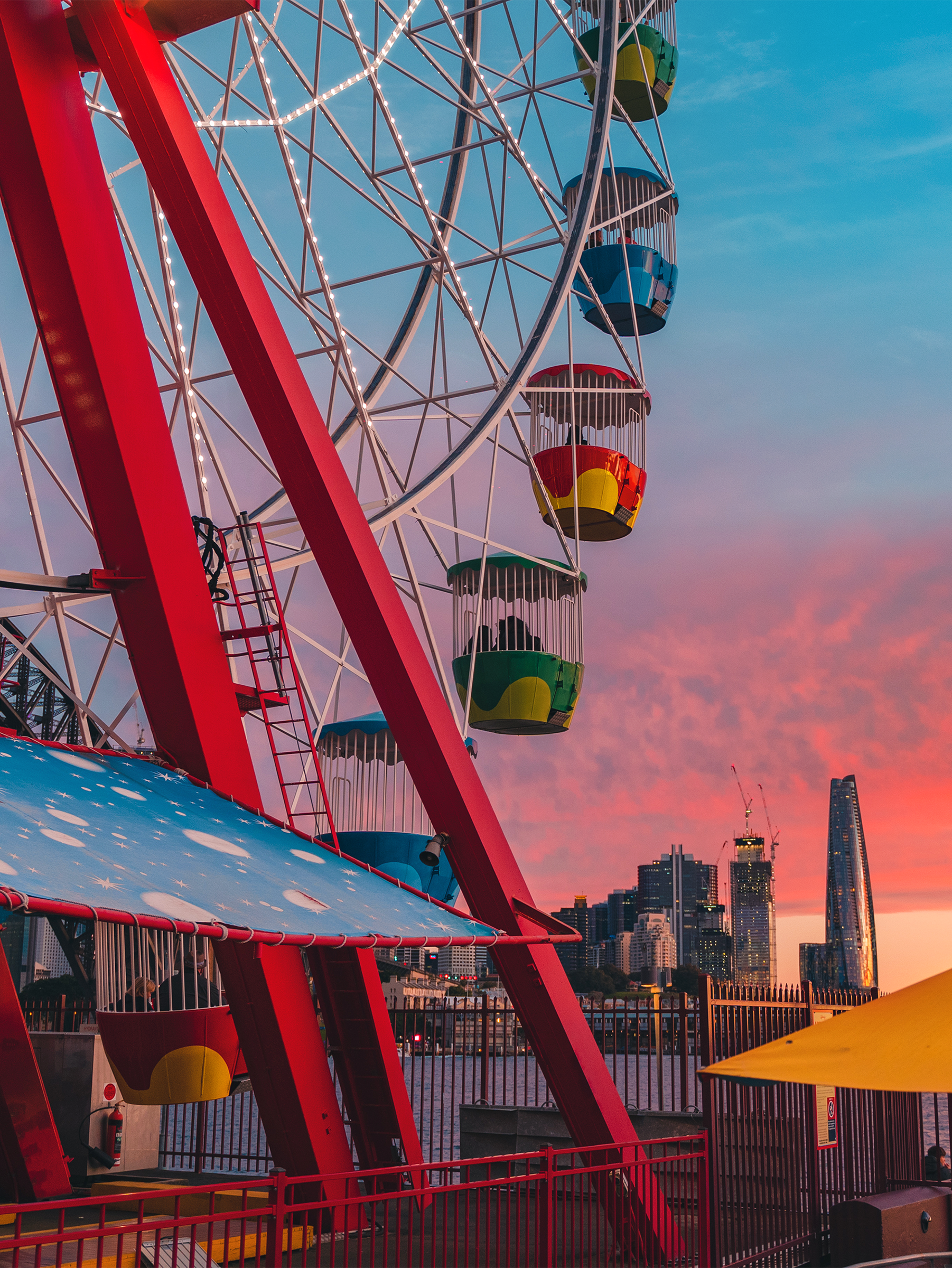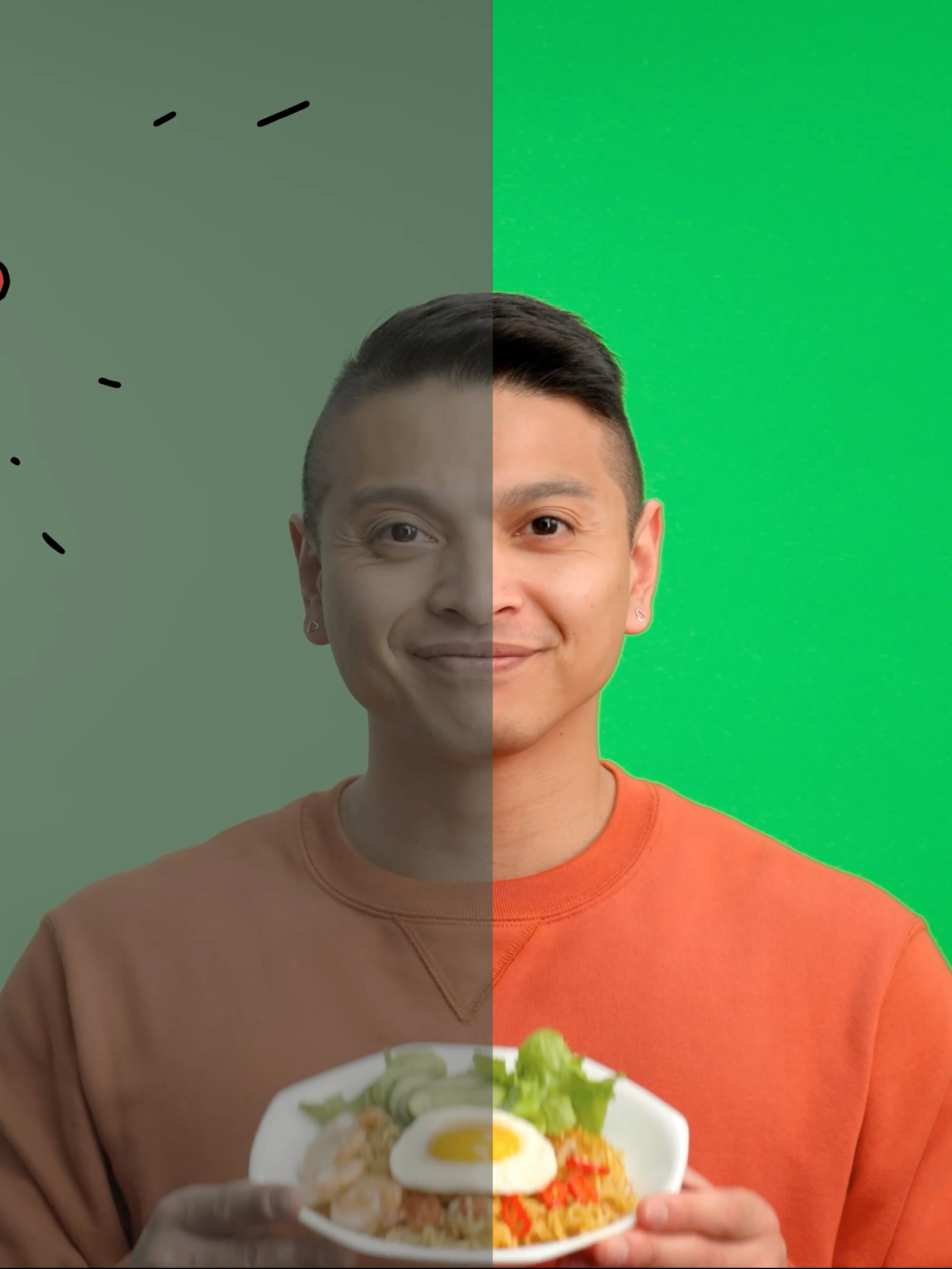In the remote highlands of Bolivia, at 4,000 meters above sea level, where the air is thin and the land unforgiving, lies the small town of Macha. Every May, this dusty settlement transforms into an arena of ritualized violence that has endured for over 500 years. Here, the ancient Quechua tradition of Tinku, meaning “encounter”, unfolds as one of the most visceral and spiritual festivals in the world.
The Tinku is not merely a brawl; it is a sacred transaction with Pachamama. Indigenous communities believe that human blood must fertilize the soil to ensure a plentiful harvest. What begins as dancing circles around the crosses (Tata Wilakruz) gradually turns into brutal hand-to-hand combat between men representing the highland communities against those from the valleys, Alasaya versus Majasaya.
The rules are deceptively simple: only fists, no grabbing clothes or hair, no weapons except for the occasional stone hidden in the palm. But simplicity breeds chaos. Alféreces with whips attempt to keep order, pulling fighters apart before the crowd can descend upon them. Yet once the stone-throwing begins, all control dissolves into a storm of flying rocks, tear gas, and the metallic taste of blood mingling with the dust of the highlands.
The visual poetry is raw: men in traditional monteras, leather helmets reminiscent of the Spanish conquistadors, with faces already swollen and bleeding, continue to search for opponents. Women in vibrant polleras are supposed to tend to the wounded, yet they are often dragged into the fights, battling other women, their colorful skirts stained with blood amid the general chaos.
Their bodies become clay vessels in the hands of a violent potter, each blow reshaping features, breaking bones, knocking out teeth. Unlike other festivals that celebrate abundance, the Tinku celebrates sacrifice. It is a festival where the very offering is human suffering, where pain becomes prayer, and where community bonds are reforged through shared brutality.
Despite government attempts to regulate it, despite the inevitable casualties and even deaths, the Tinku endures. It represents something modernity cannot touch: a direct, physical relationship with the sacred, where faith is not measured in prayers but in bruises, where solidarity is forged in the crucible of ritualized combat.
The photographs I captured reveal faces transformed by violence into masks of devotion. They are not portraits of brutality, but of transcendence their bloodied features bearing the weight of pre-Columbian memory. In their swollen eyes and split lips lies a truth about human nature and the spiritual hunger that civilization has tried to forget but cannot fully erase.
